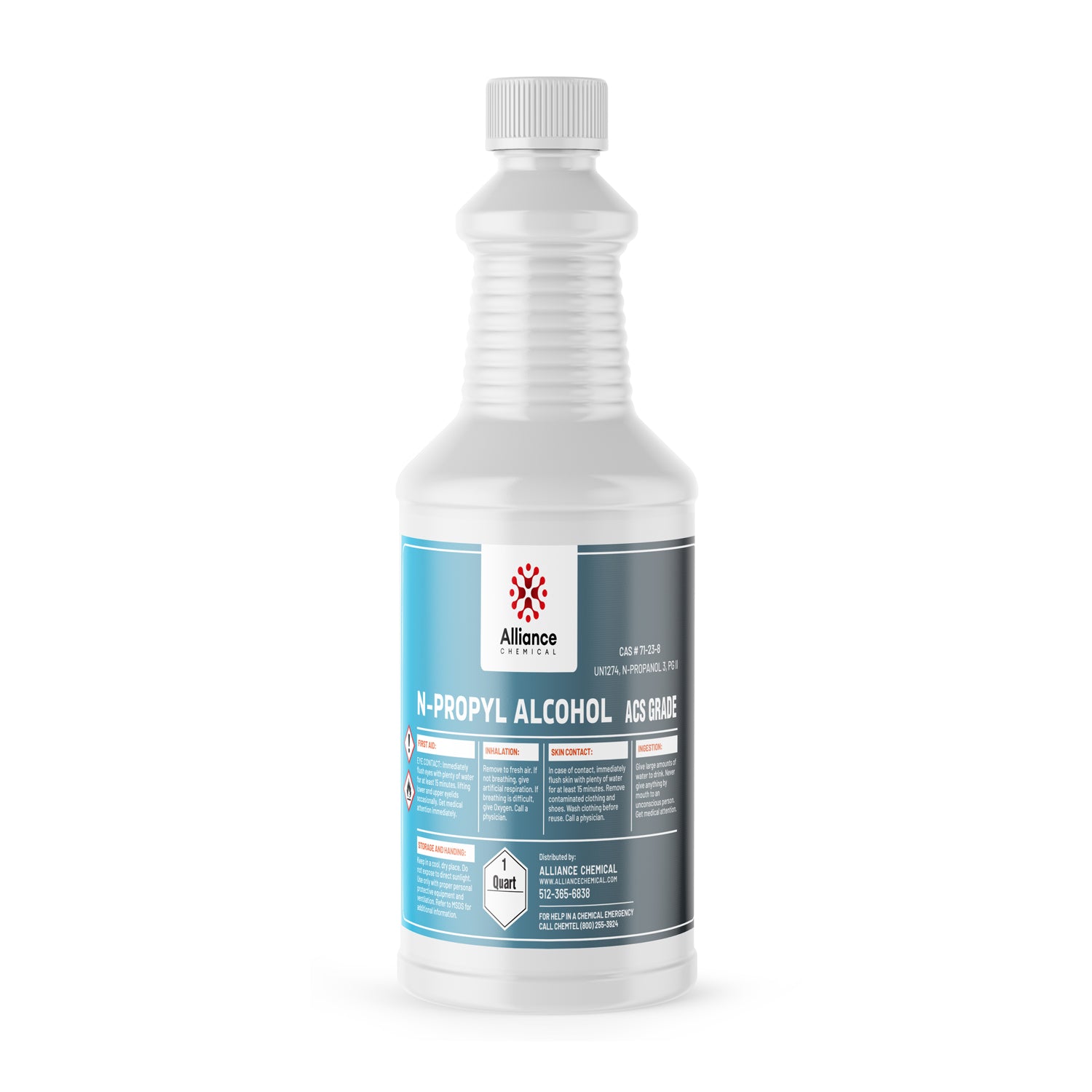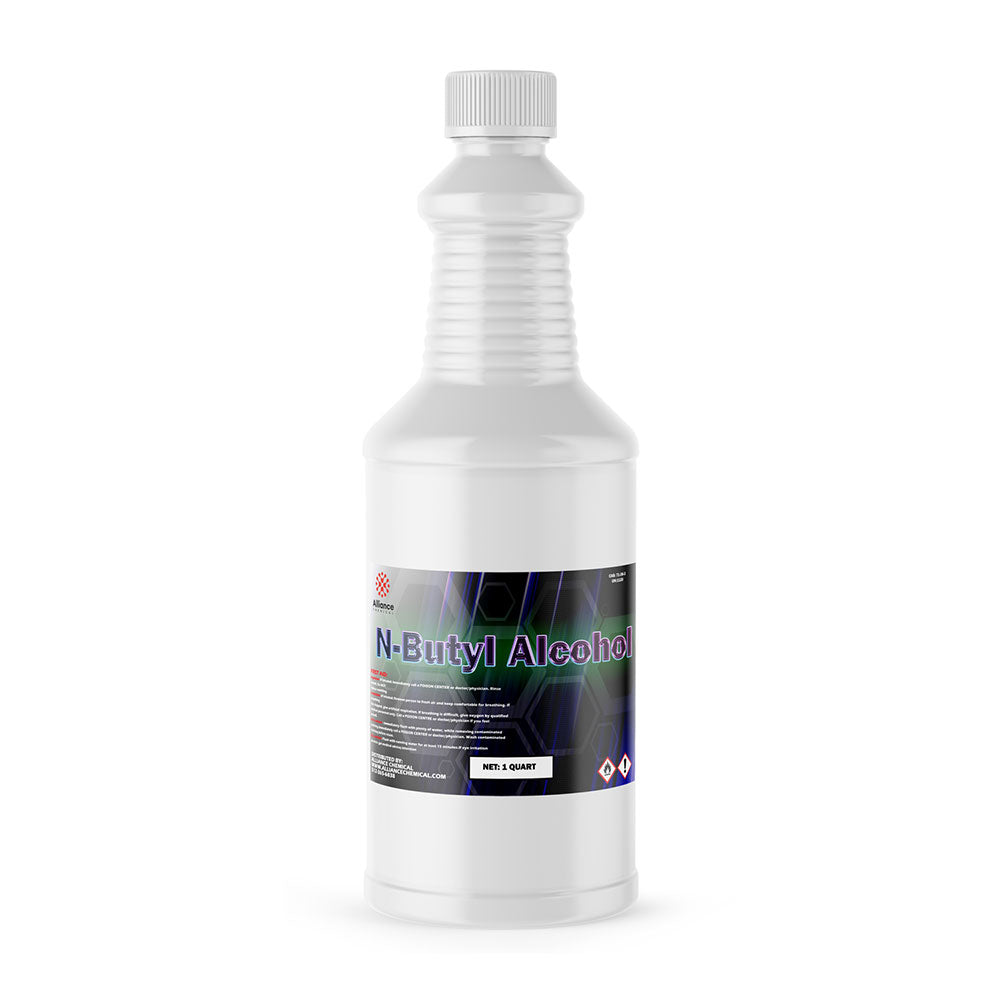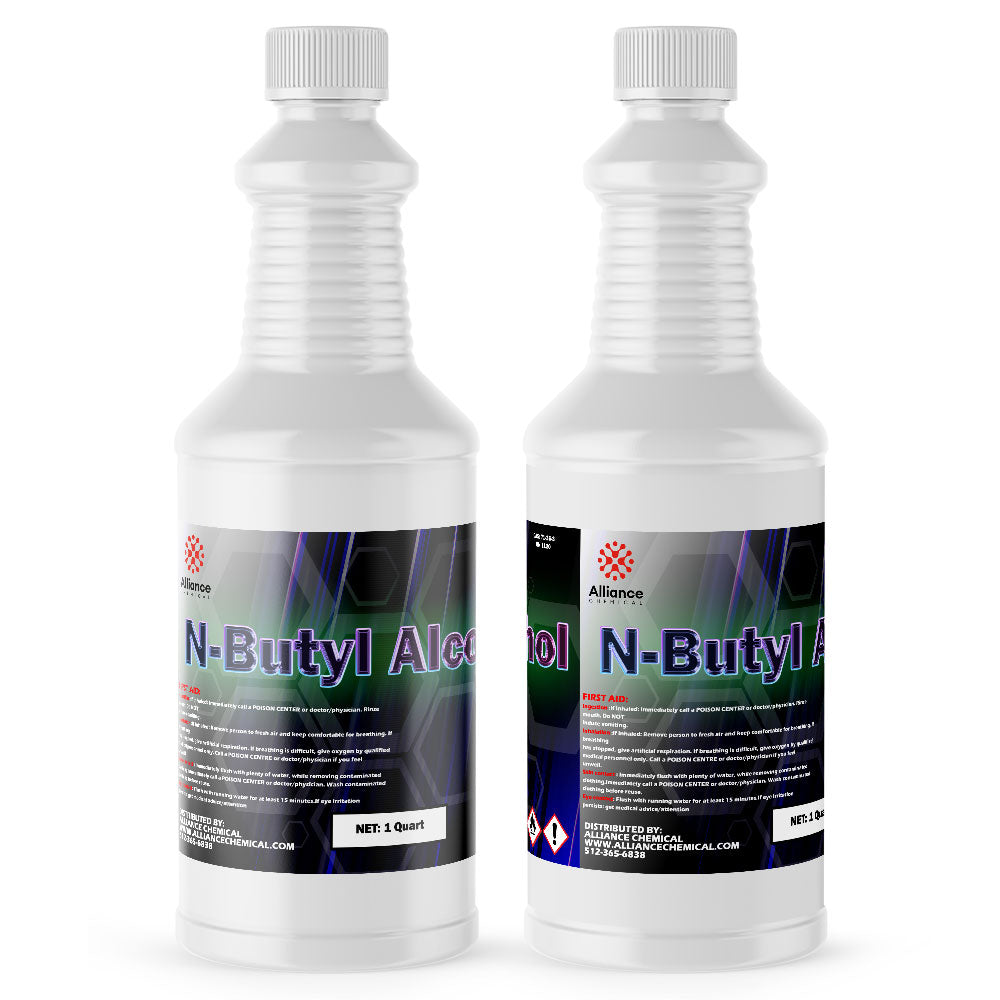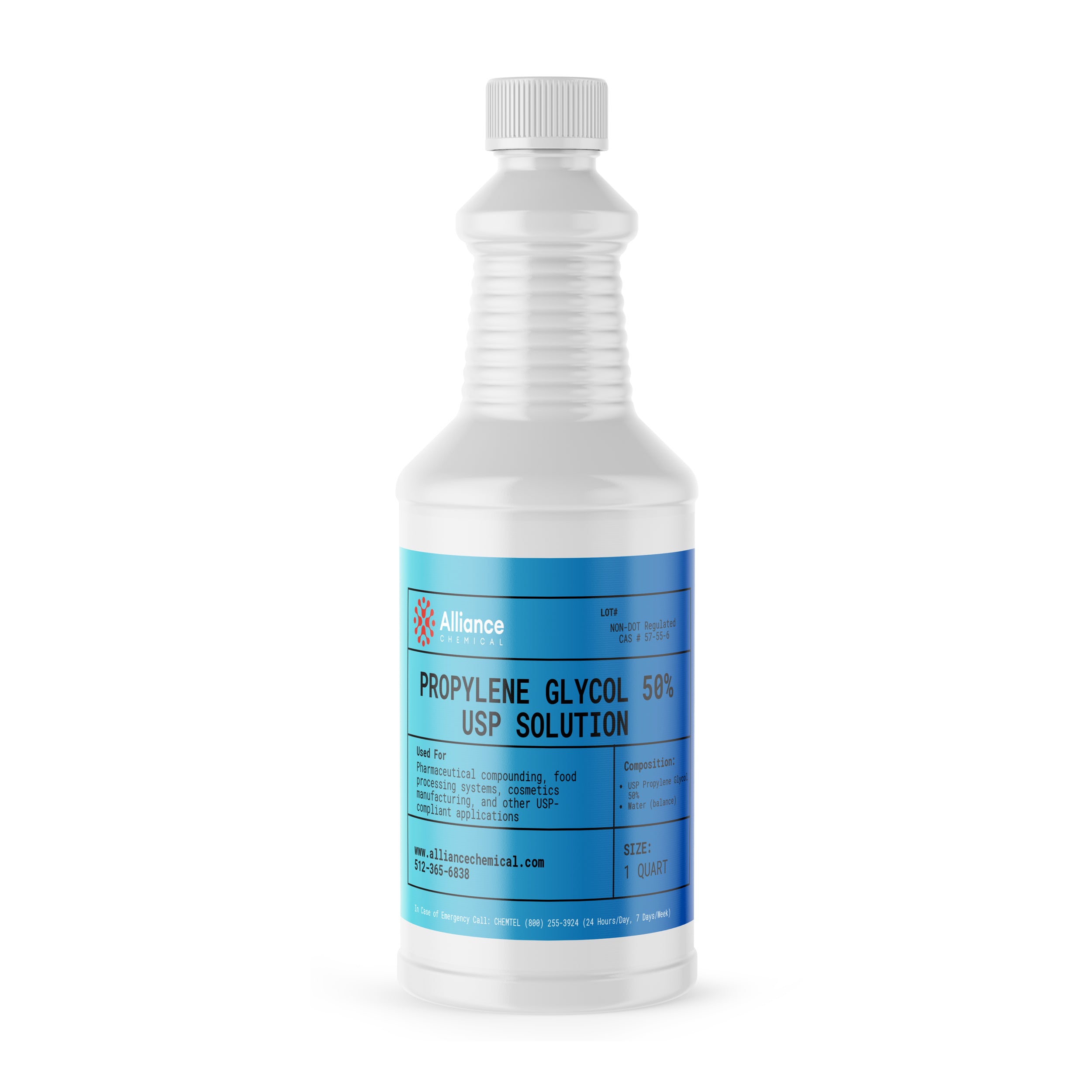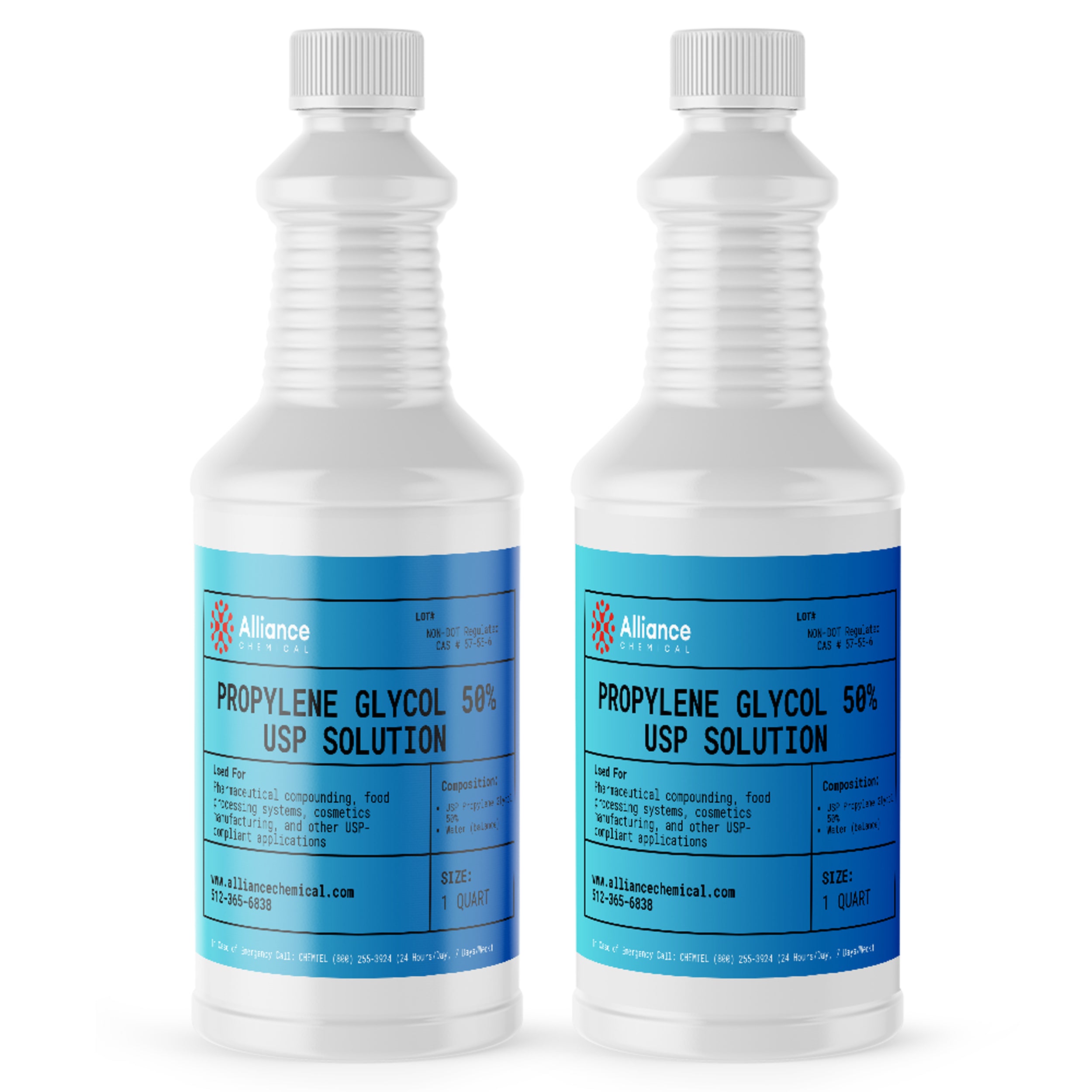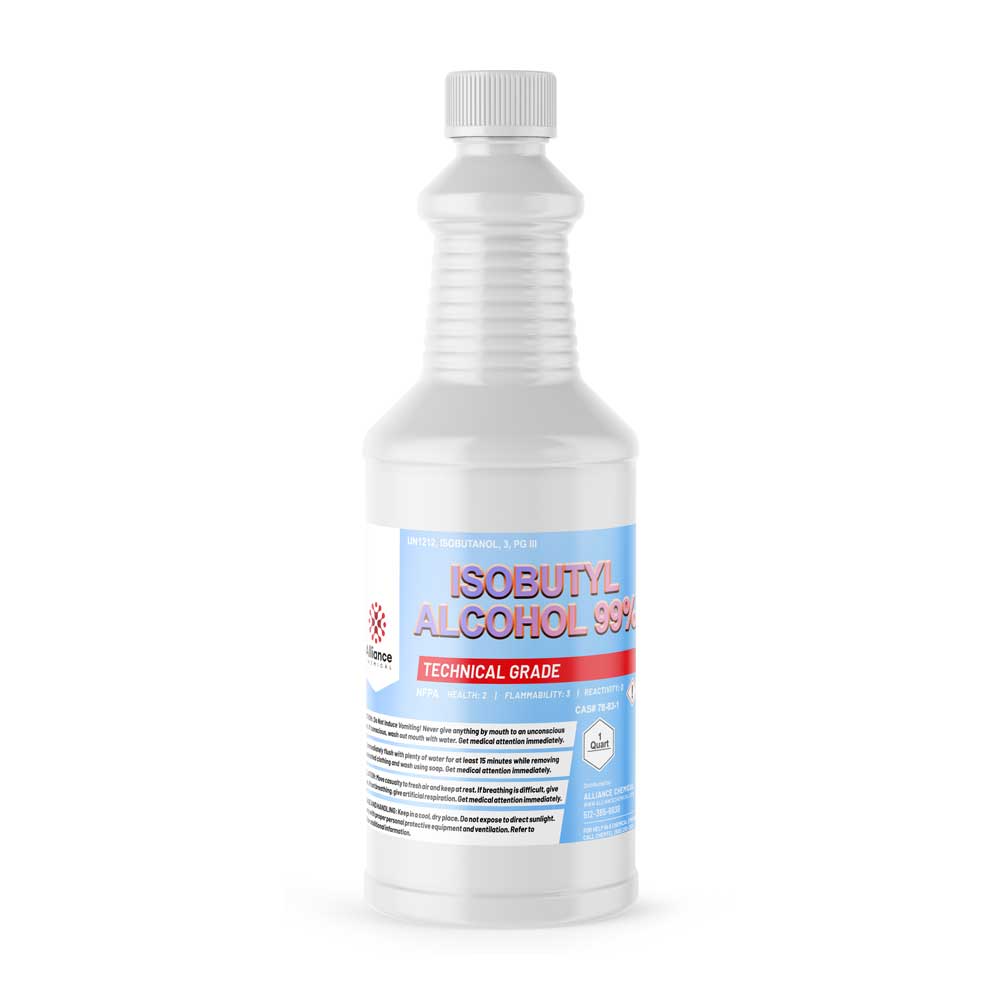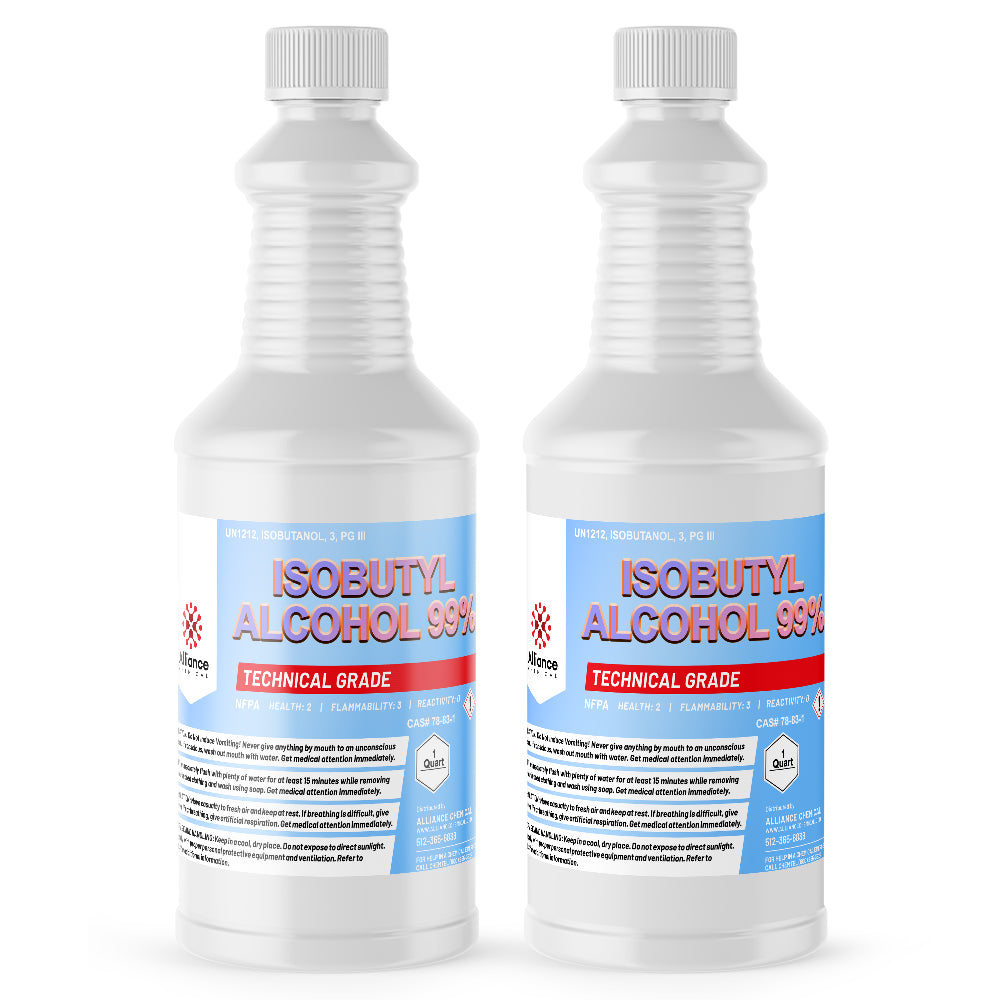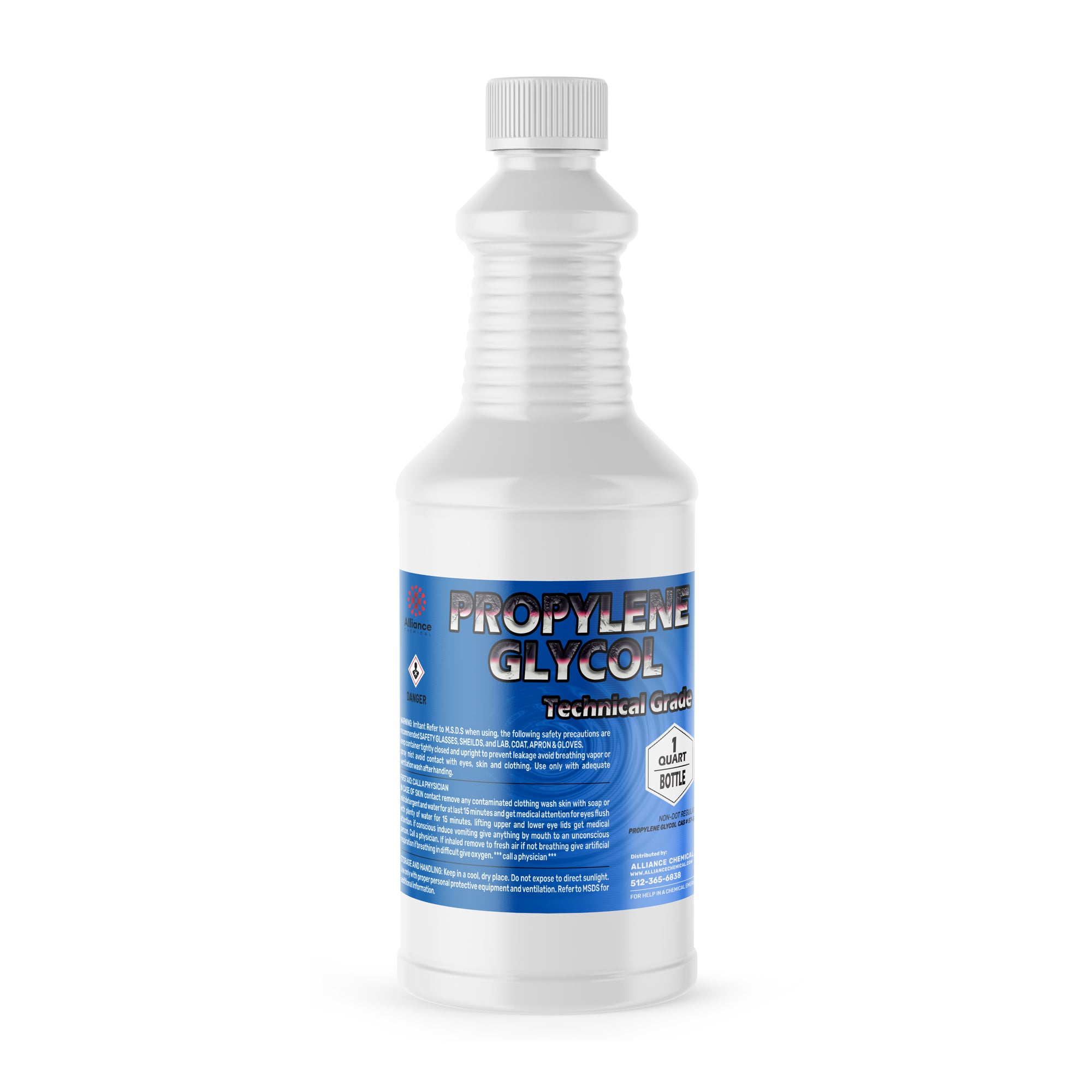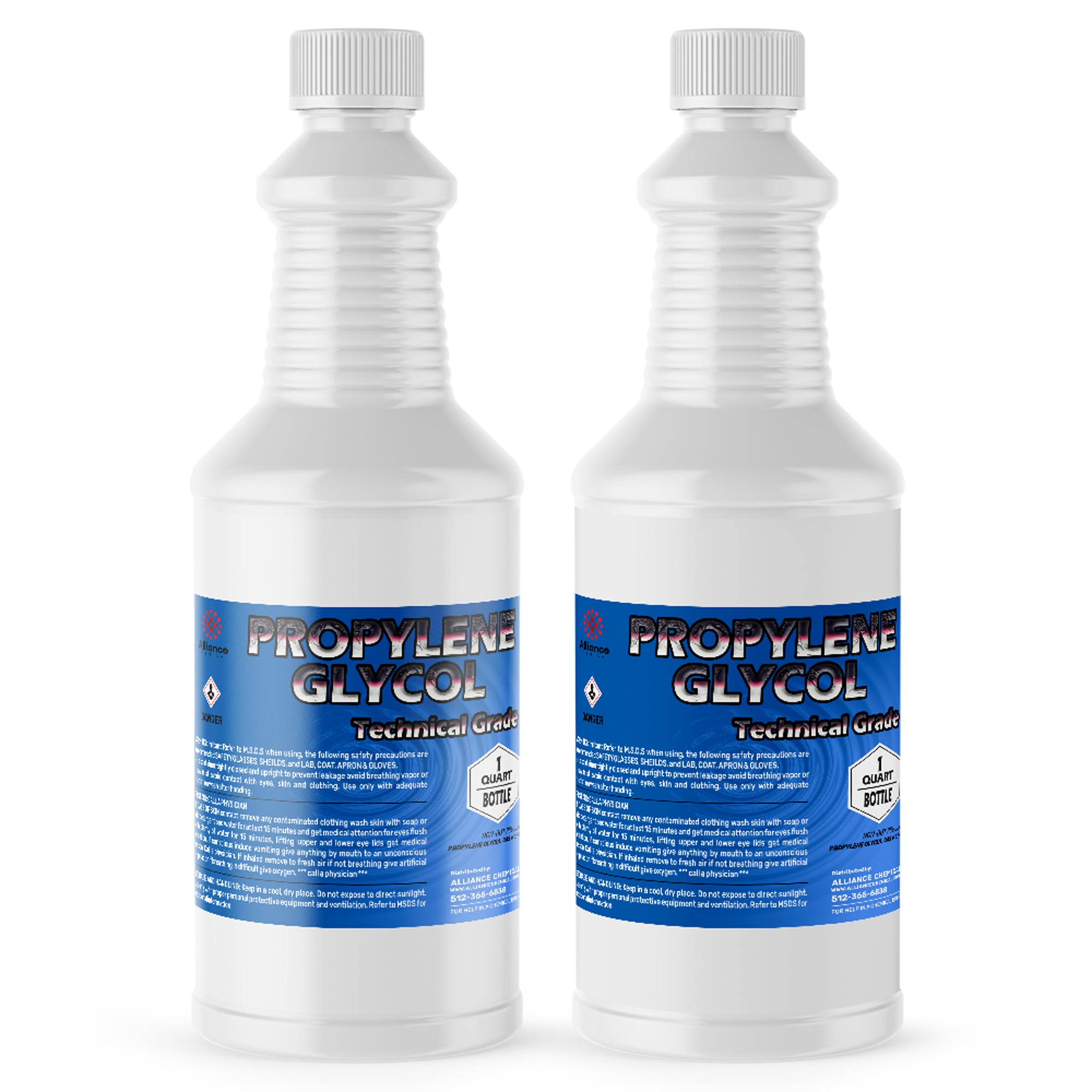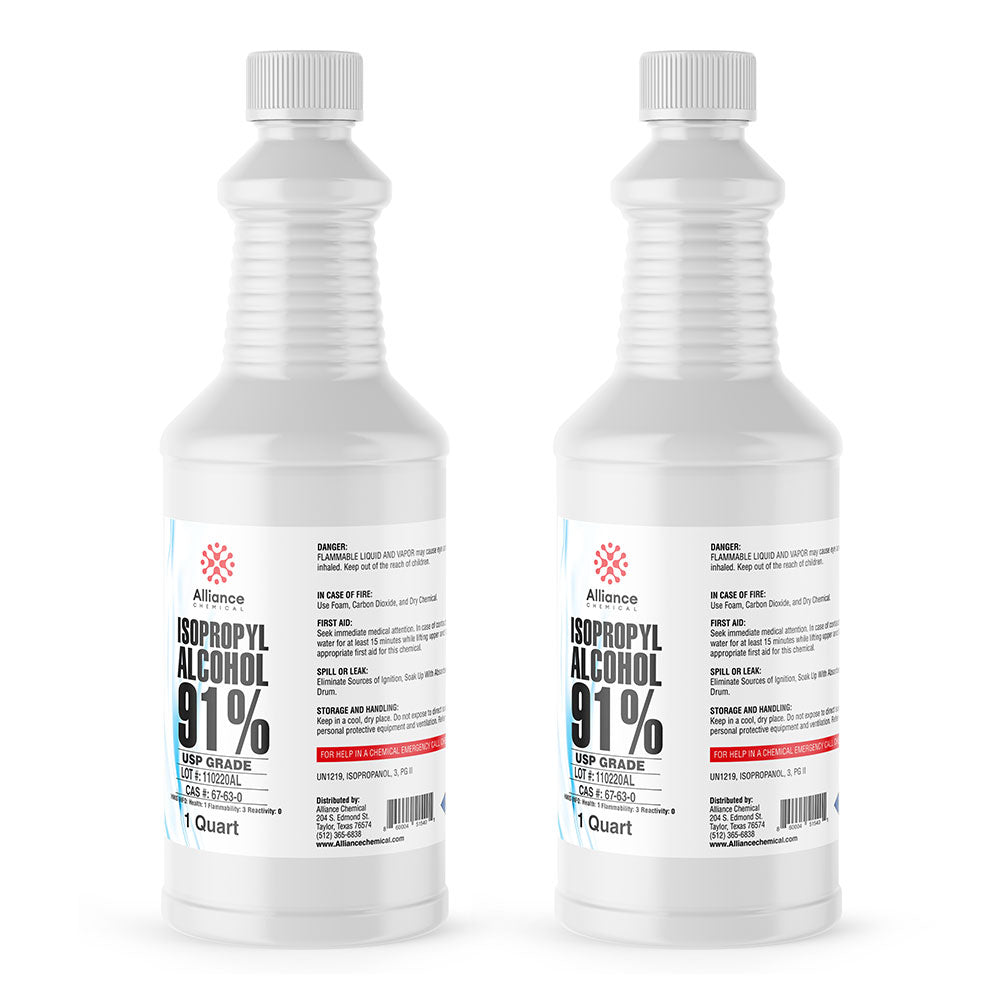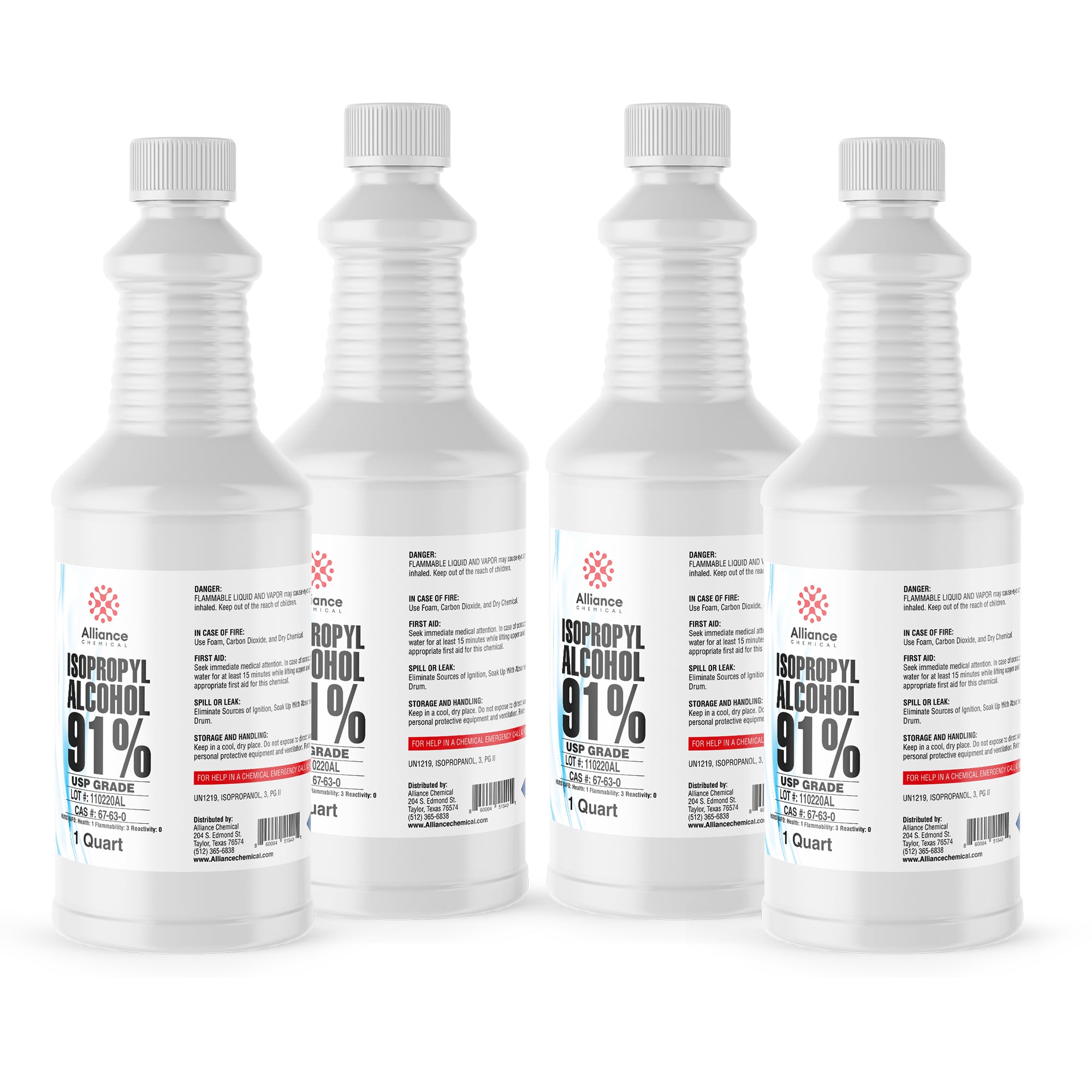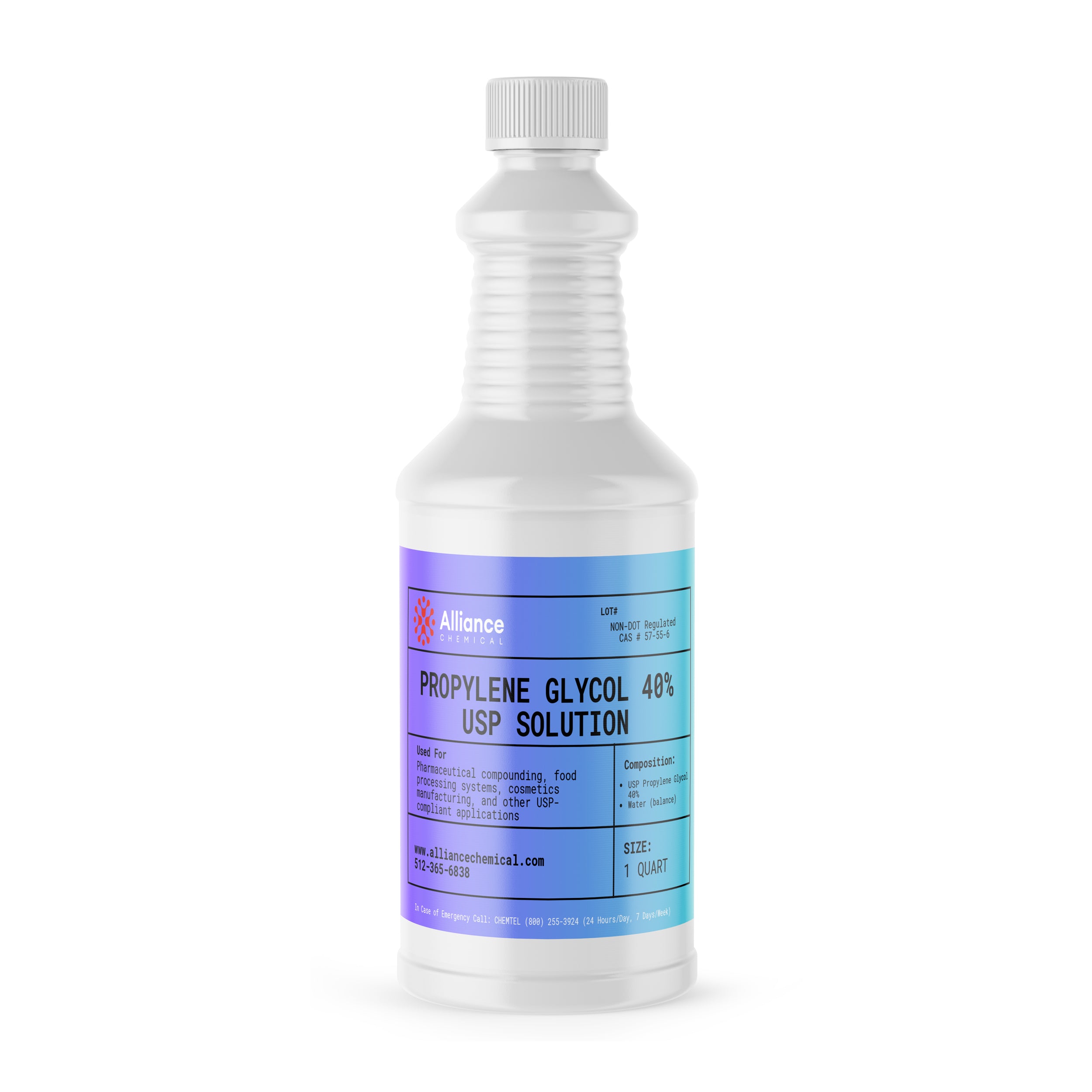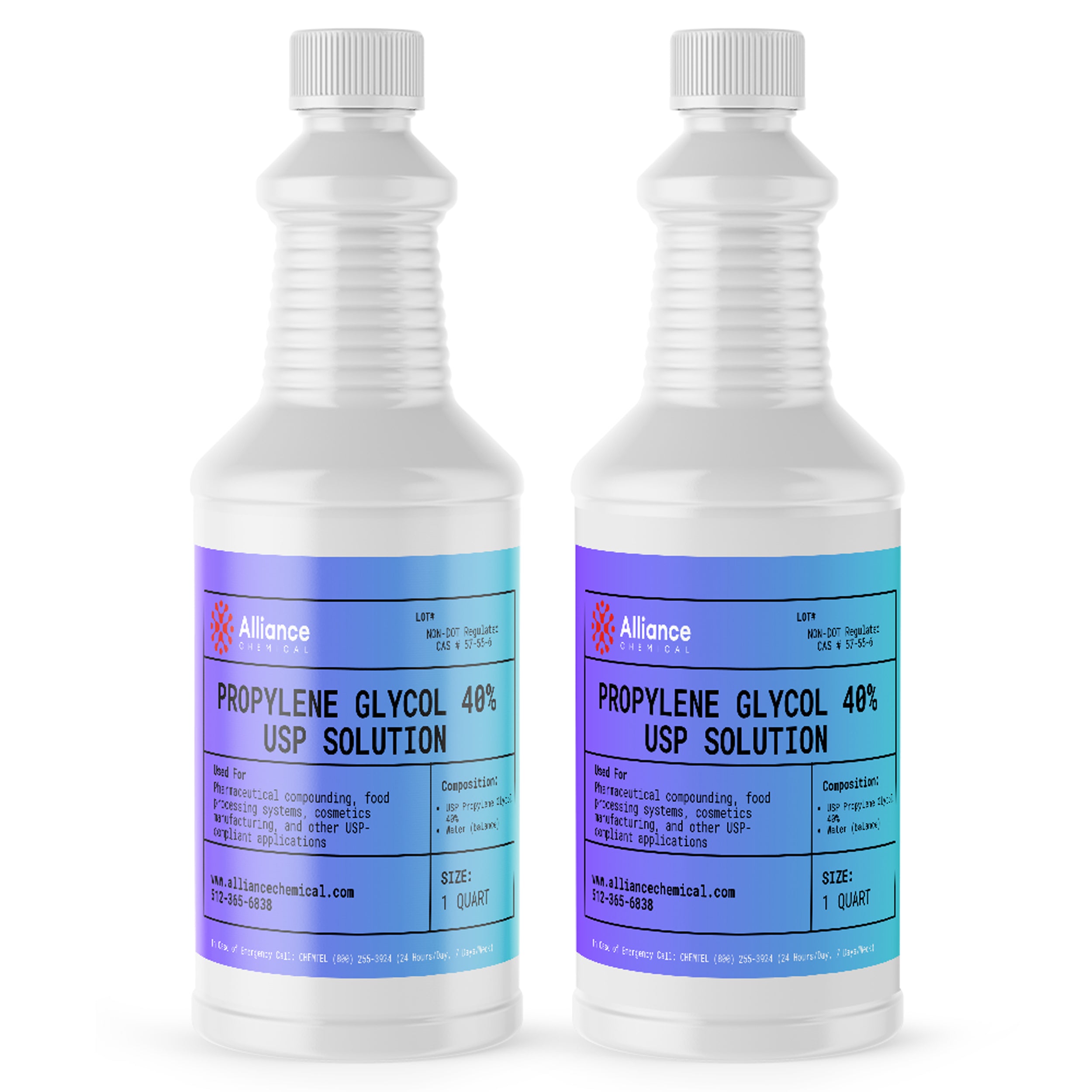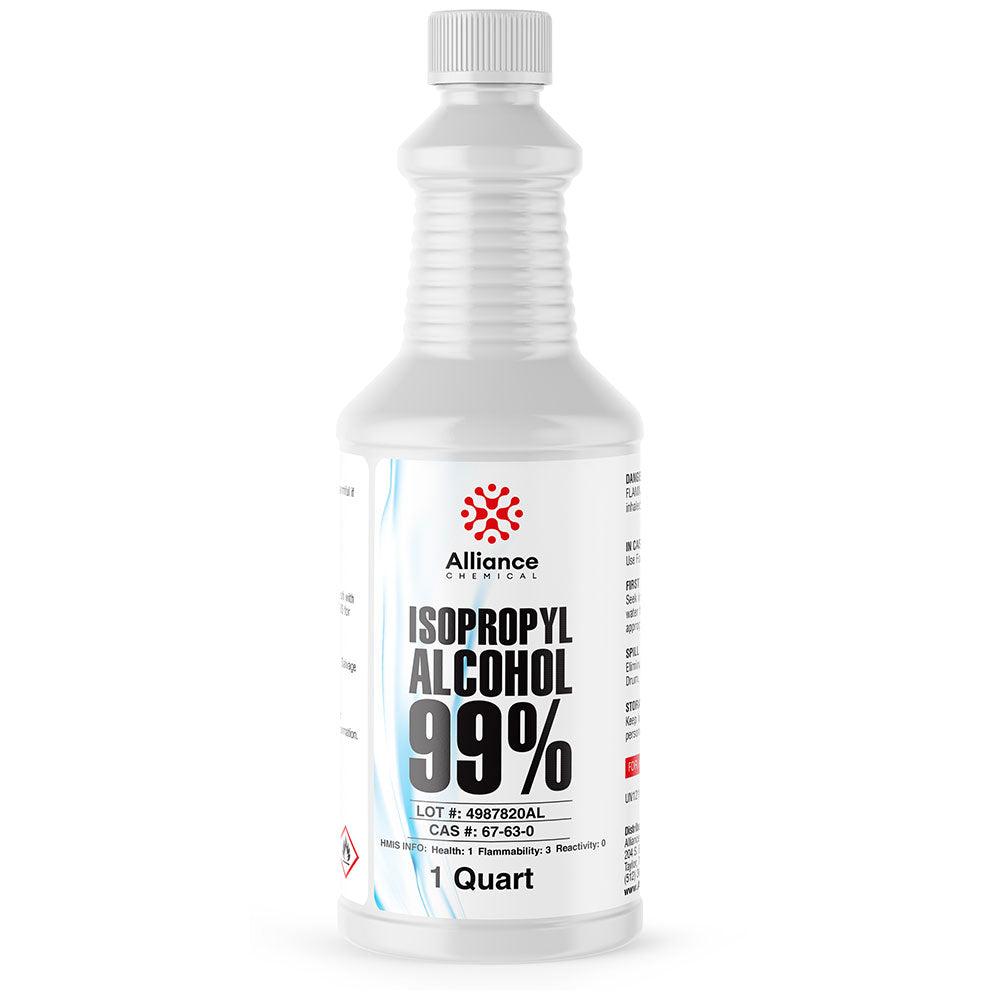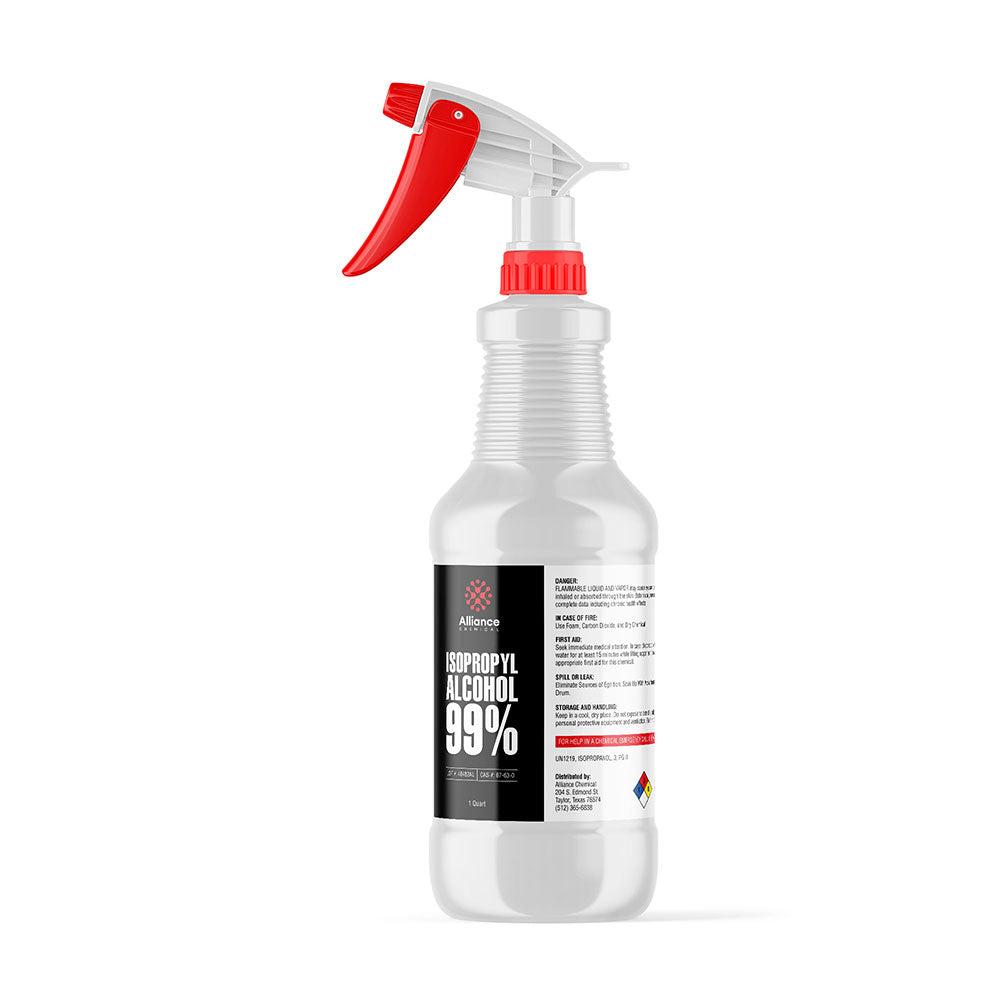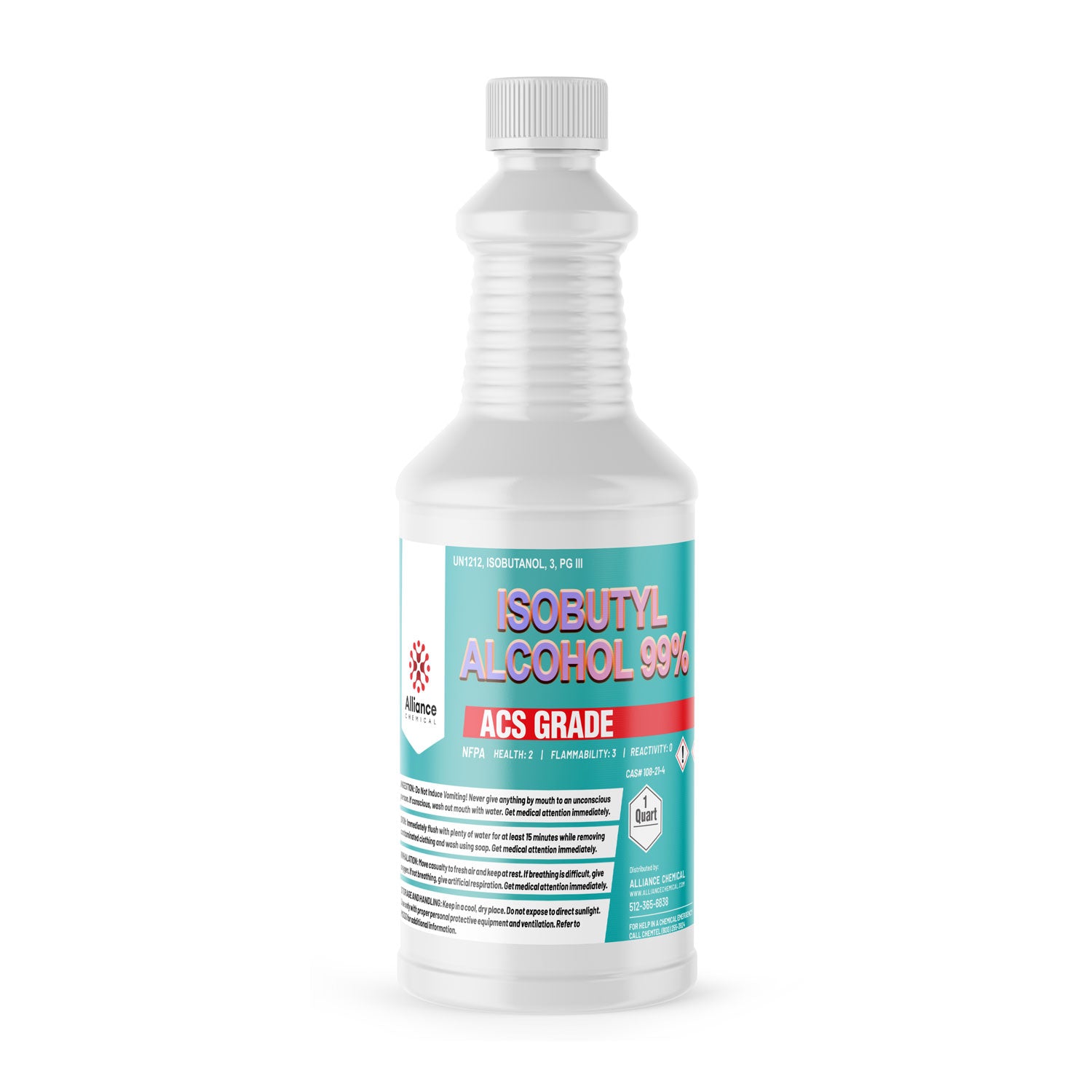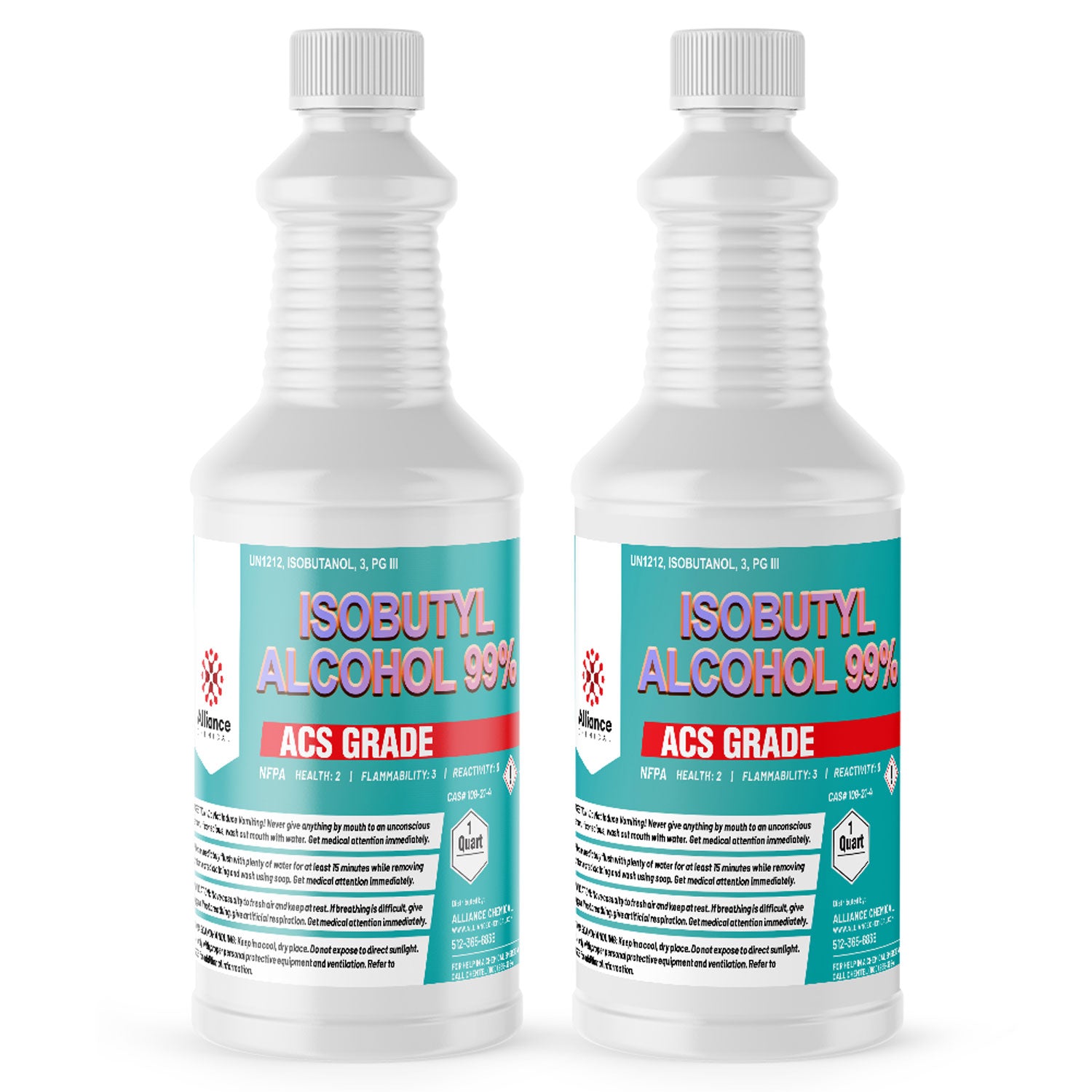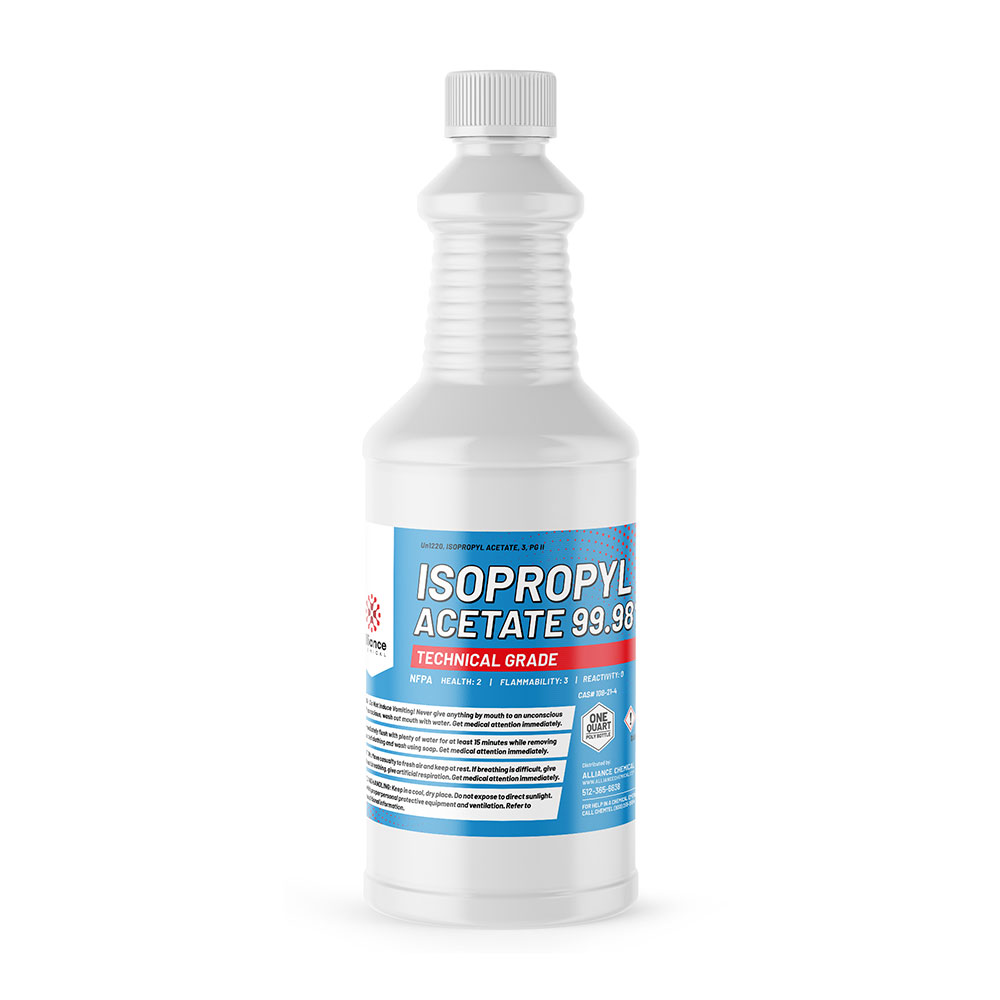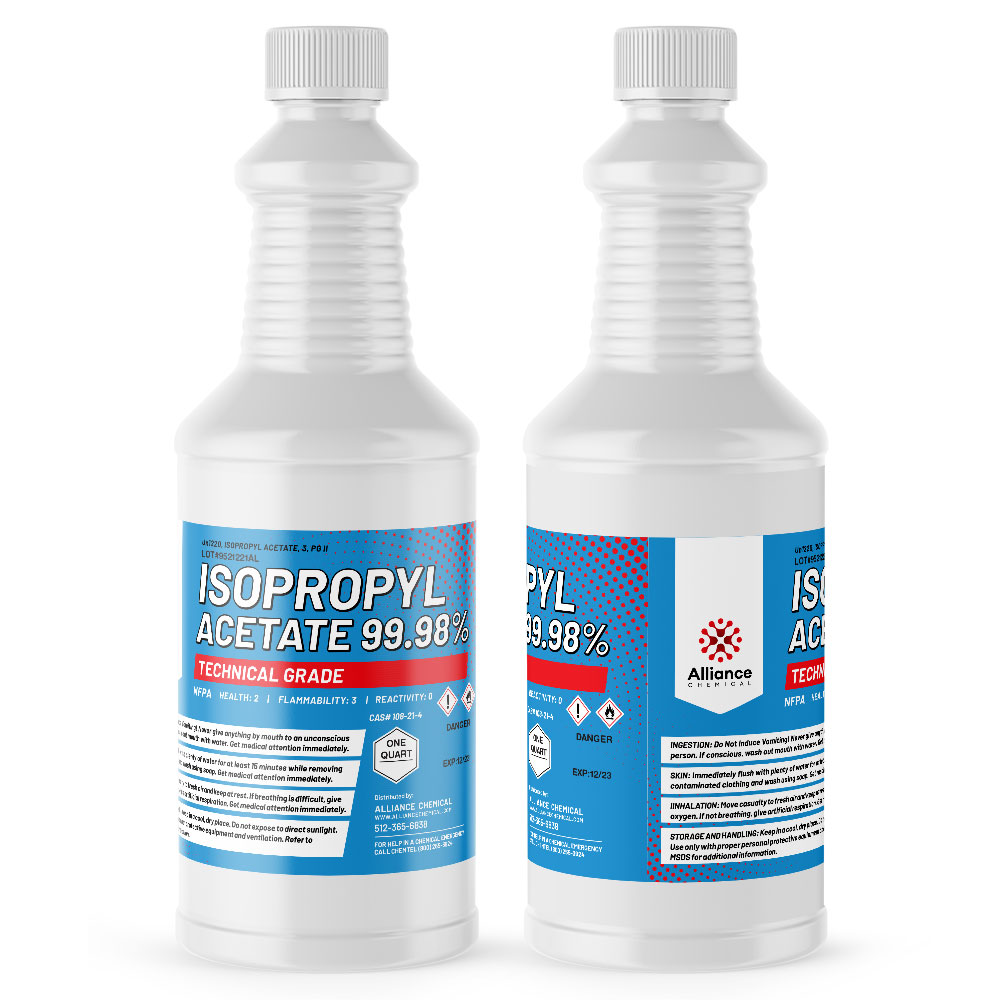Email sales@AllianceChemical.com for 24/7 Expert Support
-
512-365-6838
-
n-Propyl Alcohol
Category : Alcohols
$17.45
Liquid error (snippets/product-blocks line 100): divided by 0
Off
Unit price
/
Shipping Notice: Possible Hazmat Fees
💡 Smart Shipping Tip: Quart & Liter Sizes Often Avoid Hazmat Fees
This size may be classified as hazmat and can incur additional carrier fees. See shipping guide
- ✅ Good news: 1 Quart containers qualify as "Limited Quantity" and bypass hazmat rules
- 💡 Pro tip: Order multiple 1 Quart containers to avoid hazmat fees entirely
- 💰 Hazmat fees can get expensive - especially for larger containers (carrier charges, not our markup)
- 🚚 Ground shipping only - no expedited options for sizes over 1 Qt/1L
Required by 49 CFR § 173.150 for chemical containers larger than 1 quart. Actual fees shown at checkout. View our complete shipping guide →
✅ Great Choice! No Hazmat Fees
1 Quart containers qualify as "Limited Quantity" and avoid hazmat shipping fees.
- 🚀 Faster shipping: Eligible for expedited shipping options including air transport
- 💰 No hazmat fees: Ships as "Limited Quantity" per DOT regulations
- 📦 Convenient size: Perfect for testing or smaller applications
- ♻️ Smart choice: Order multiple quarts to get the volume you need without hazmat charges
Exempted under 49 CFR § 173.150 Limited Quantity provisions for containers ≤1 liter/quart. Learn more in our shipping guide →
Quantity
Size:
Variation:
-
$17.45Delivery every$16.58
-
$24.18Delivery every$22.97
-
$34.49Delivery every$32.77
-
$51.37Delivery every$48.80
-
$37.51Delivery every$35.63
-
$59.70Delivery every$56.72
-
$98.35Delivery every$93.43
-
$2,988.67Delivery every$2,839.24
-
$142.17Delivery every$135.06
-
$540.05Delivery every$513.05
-
$3,953.37Delivery every$3,755.70
-
$1,077.29Delivery every$1,023.43
-
$3,517.27Delivery every$3,341.41
-
$4,109.97Delivery every$3,904.47
-
$4,685.37Delivery every$4,451.10
$17.45
Liquid error (snippets/product-sticky-blocks line 69): divided by 0
Off
Unit price
/
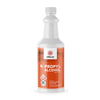
n-Propyl Alcohol
$17.45
Liquid error (snippets/sticky-product line 56): divided by 0
Off
Unit price
/
Size:
Variation:
-
$17.45Delivery every$16.58
-
$24.18Delivery every$22.97
-
$34.49Delivery every$32.77
-
$51.37Delivery every$48.80
-
$37.51Delivery every$35.63
-
$59.70Delivery every$56.72
-
$98.35Delivery every$93.43
-
$2,988.67Delivery every$2,839.24
-
$142.17Delivery every$135.06
-
$540.05Delivery every$513.05
-
$3,953.37Delivery every$3,755.70
-
$1,077.29Delivery every$1,023.43
-
$3,517.27Delivery every$3,341.41
-
$4,109.97Delivery every$3,904.47
-
$4,685.37Delivery every$4,451.10
Ask a question

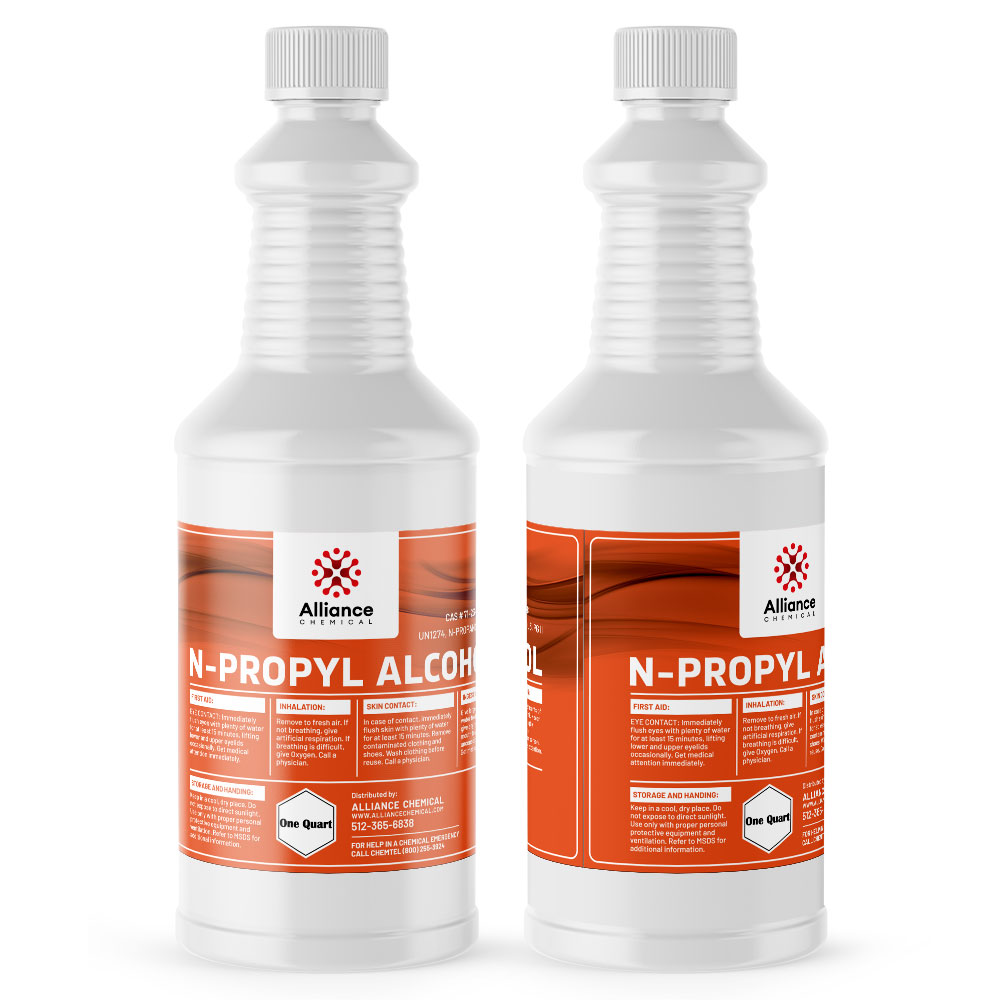
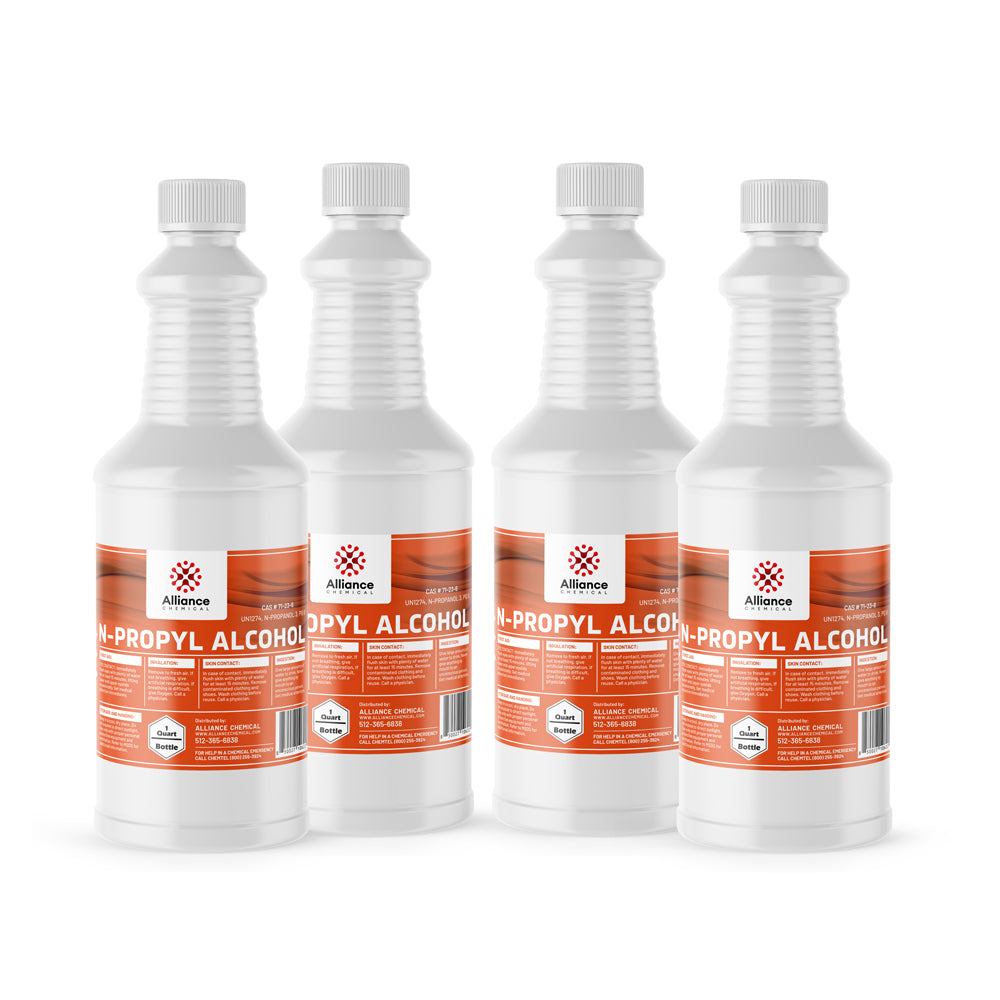

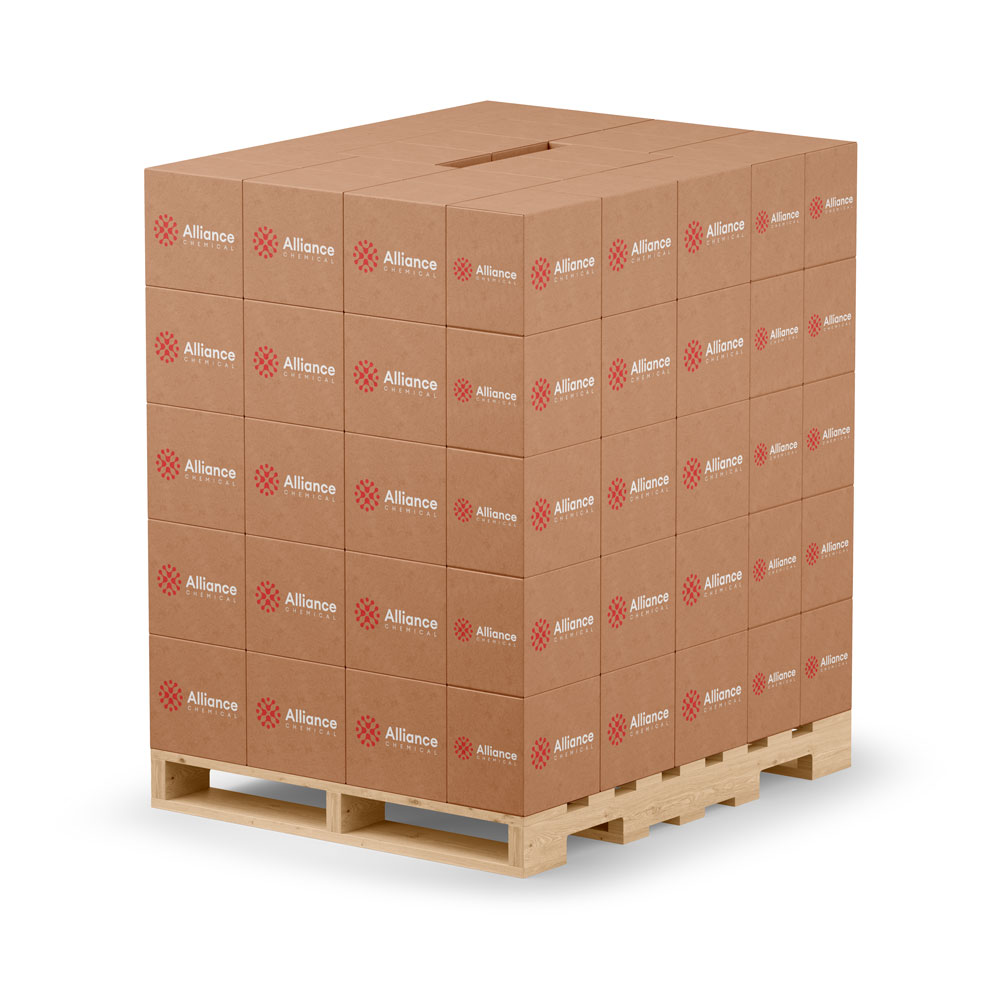
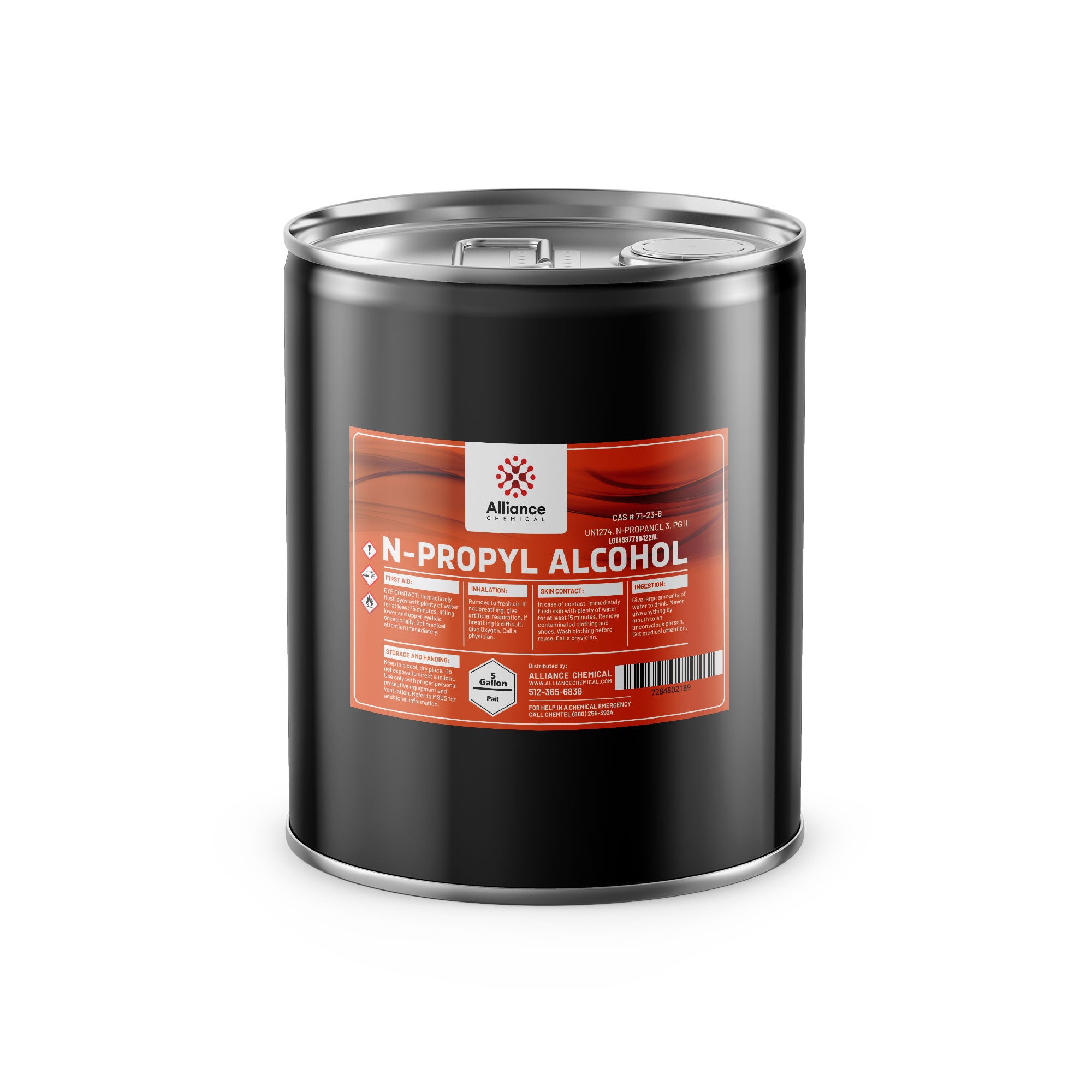
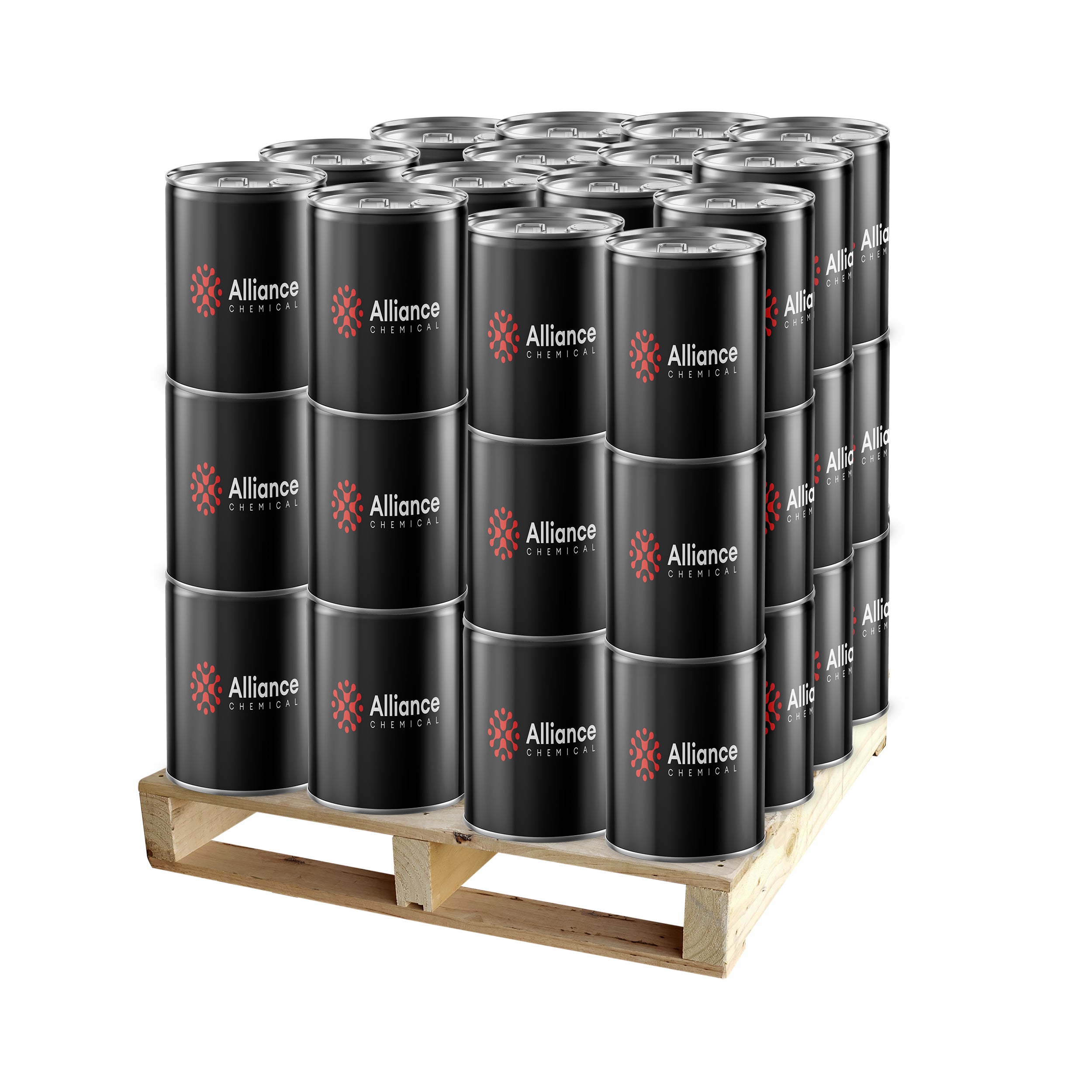
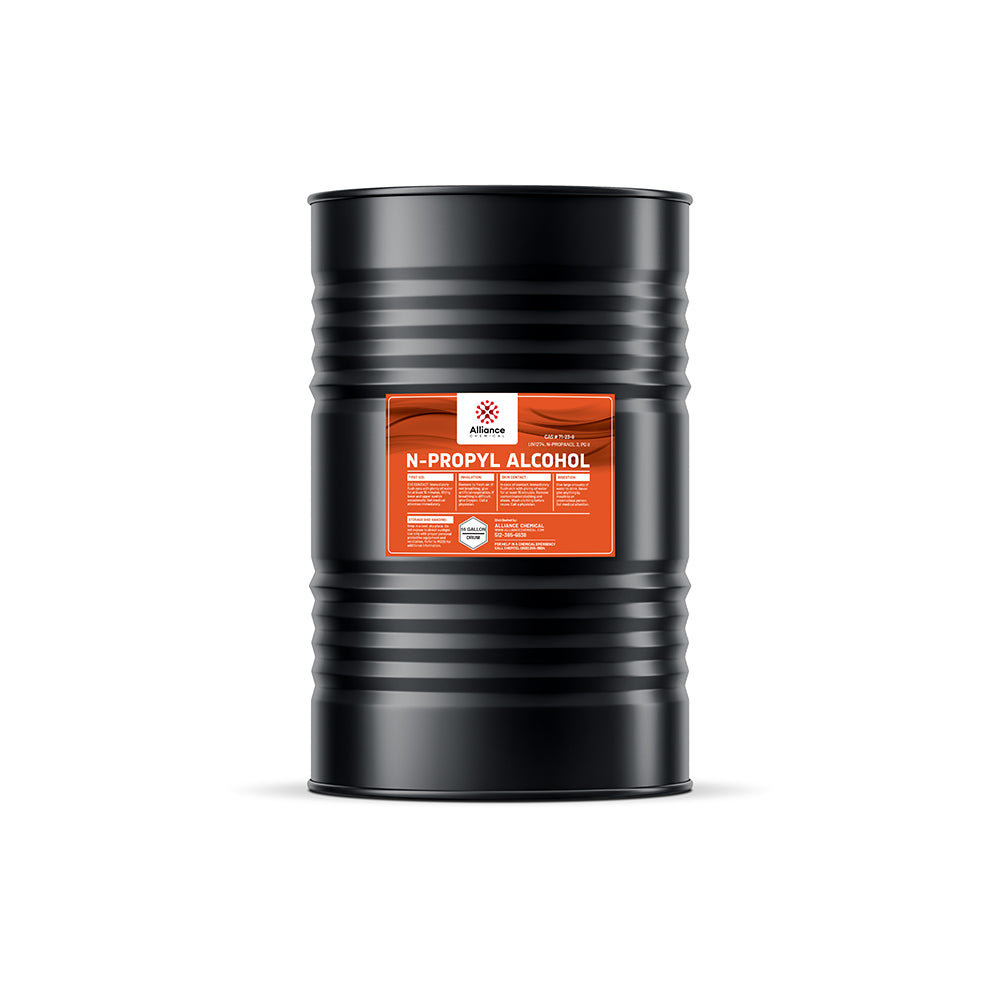
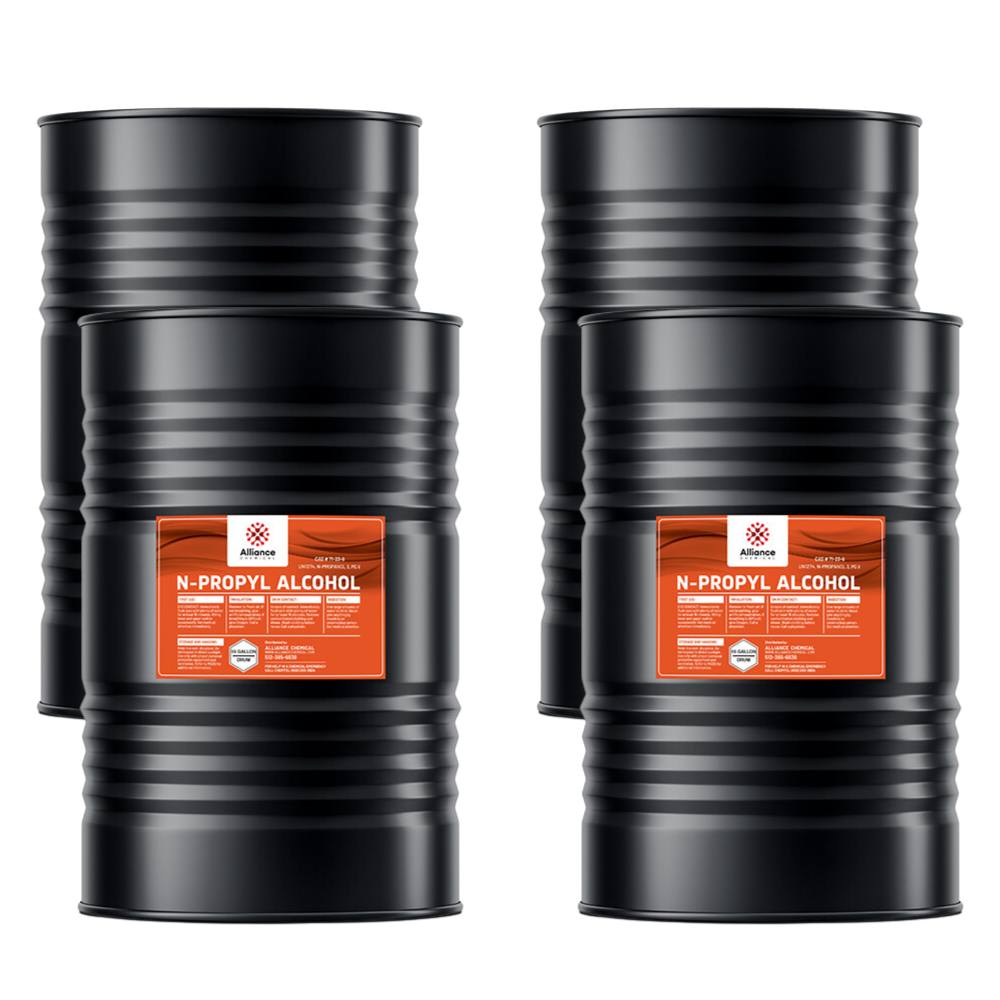
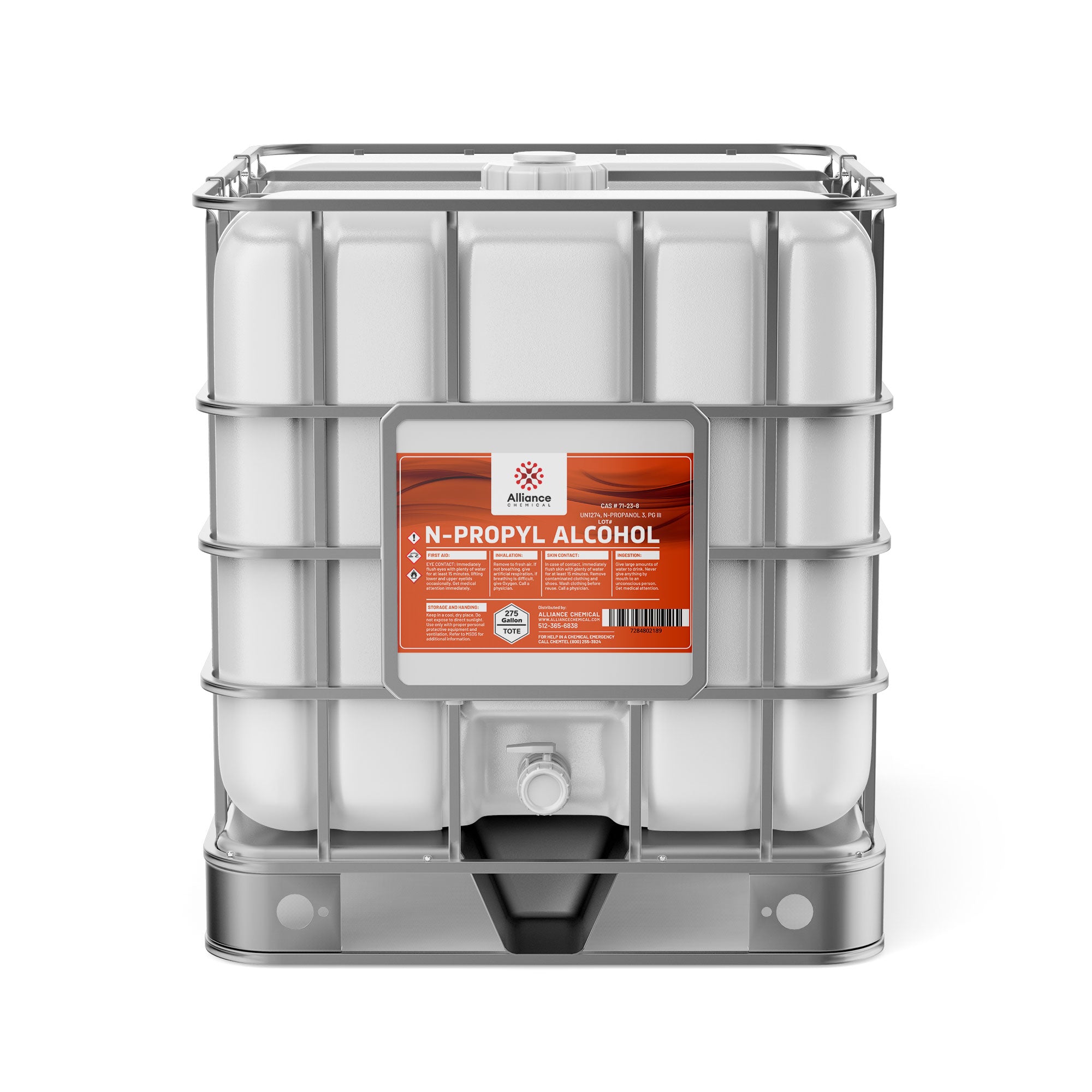
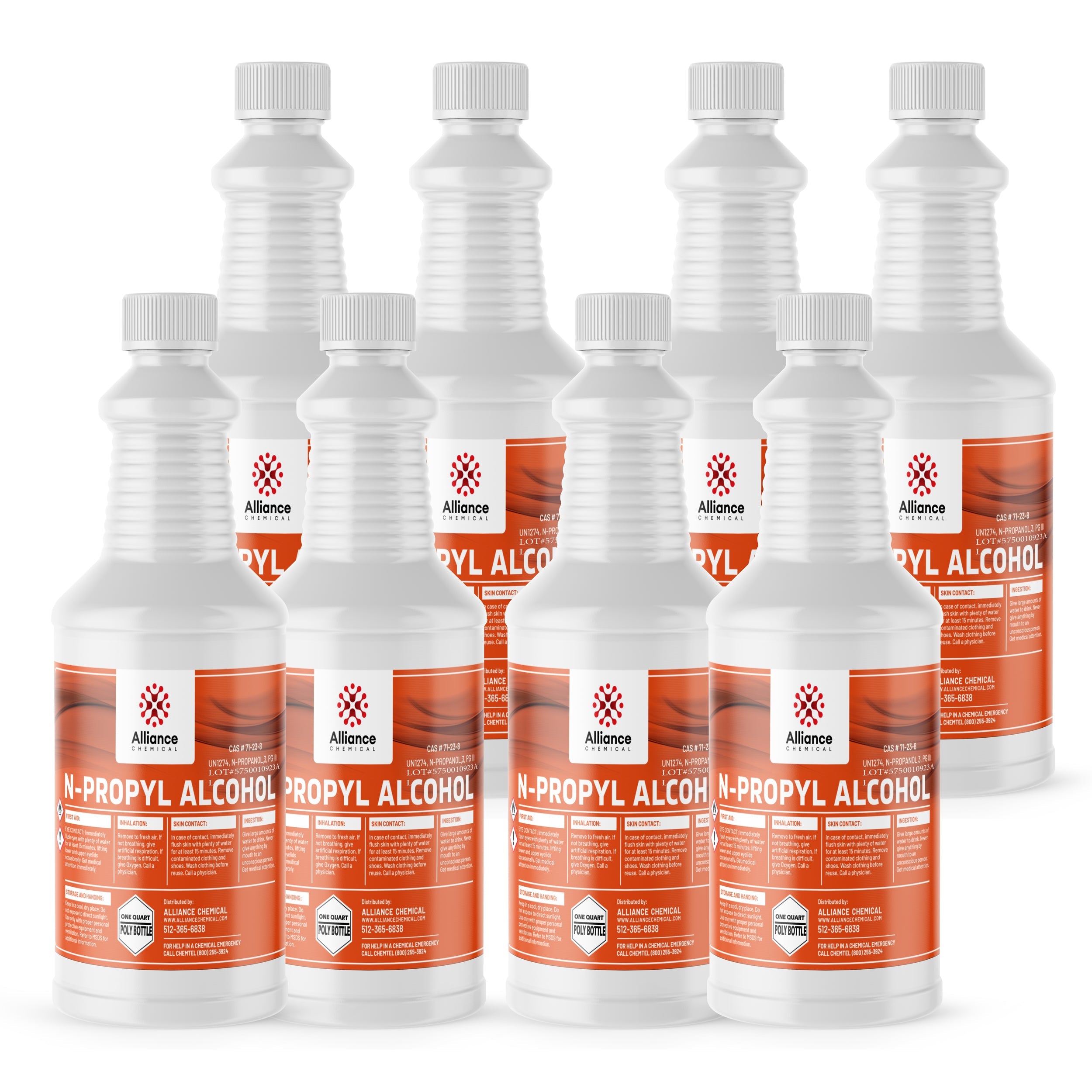
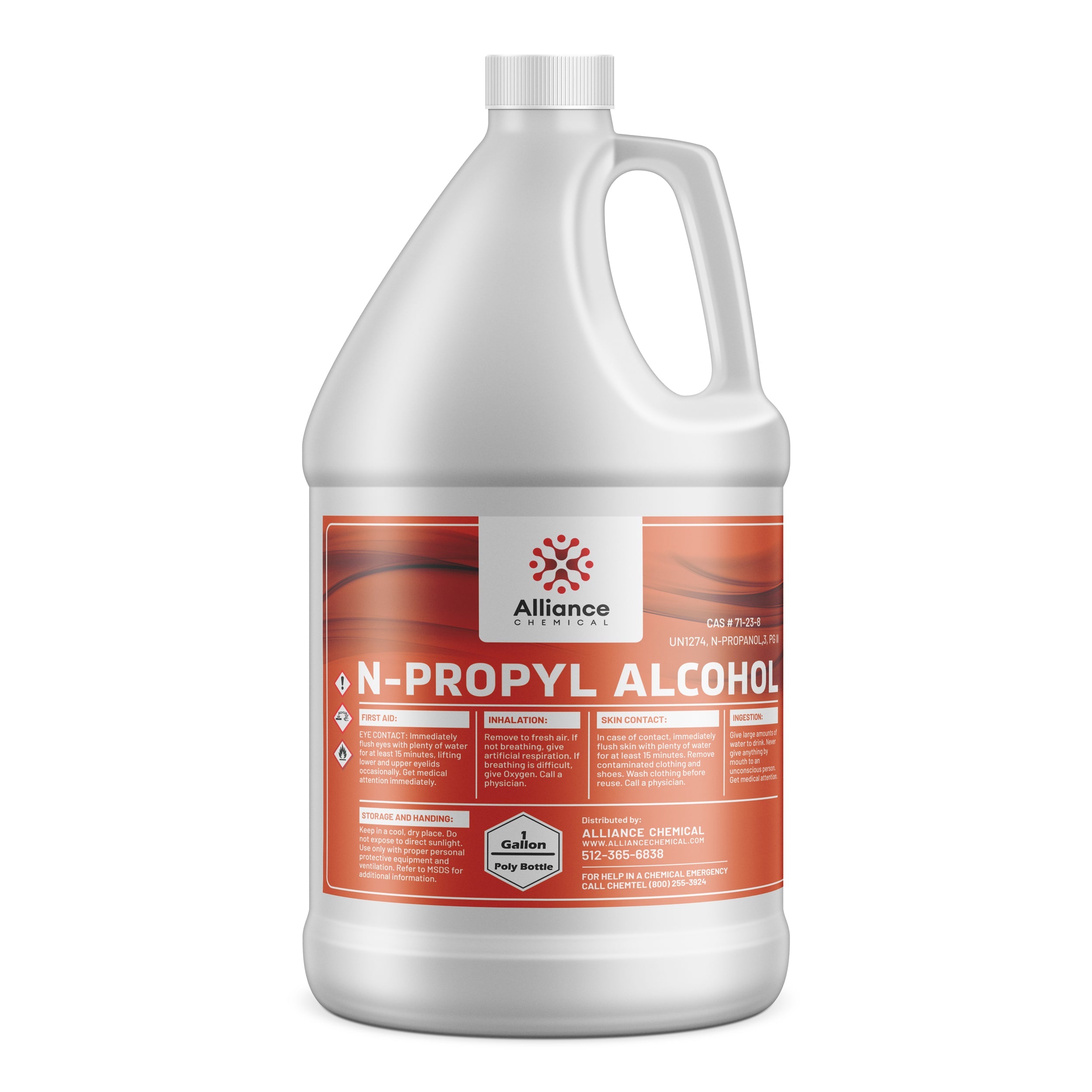
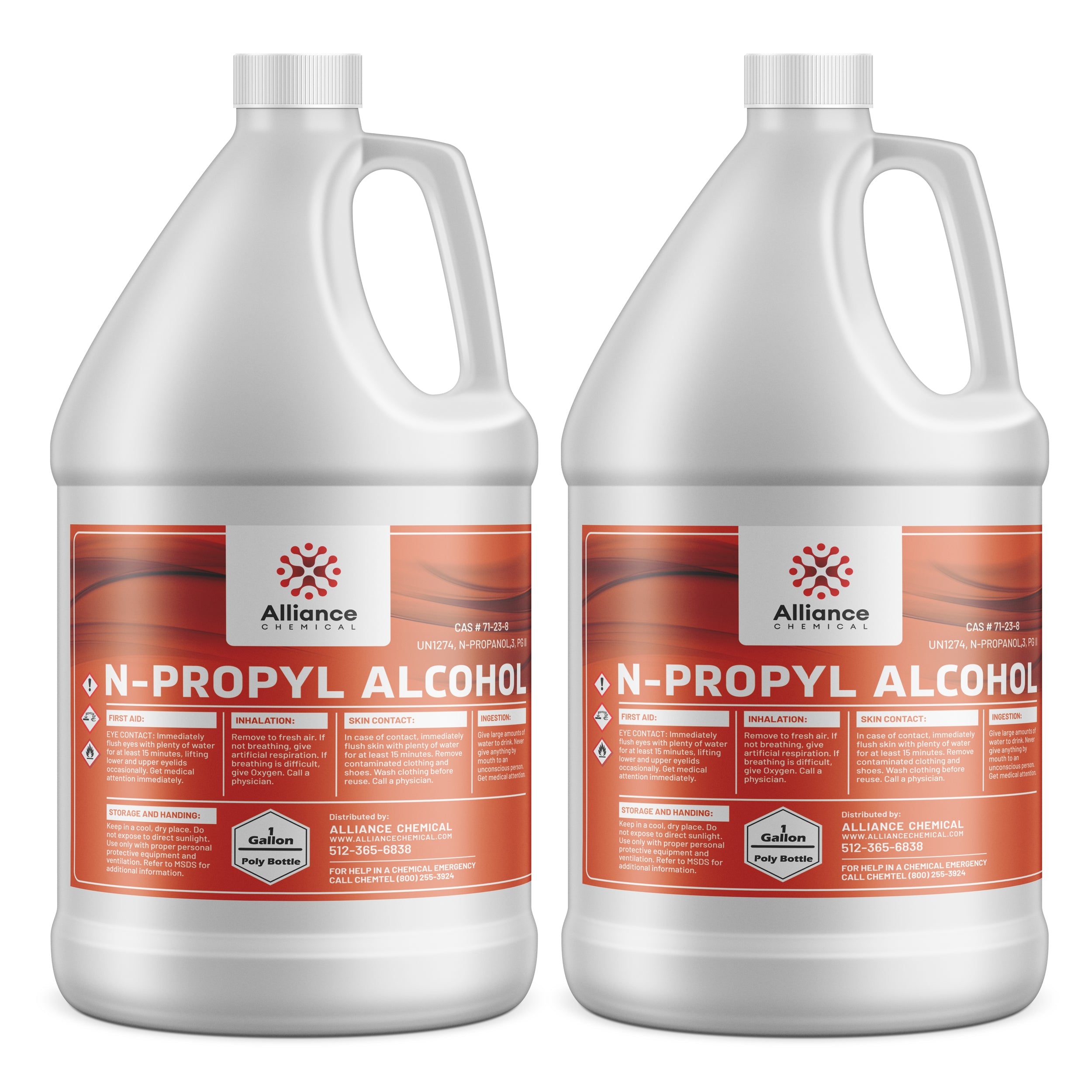

- Description
- Product Documents
Product Overview
N-Propyl Alcohol, also known as 1-Propanol, is a colorless flammable liquid with a characteristic alcohol odor. This Technical Grade solvent exhibits a molecular formula of C₃H₈O and a molecular weight of 60.1 g/mol, providing reliable solvency for a broad range of organic and inorganic substrates. The product is supplied with a GC-FID assay range of 99.0–100.5 wt% (typical 99.6%), ensuring high purity suitable for analytical and preparative workflows. With a boiling range of 97–99°C, low residue (<0.01 wt% typical 0.005) after evaporation, and a low sulfurous and metallic impurity profile, it supports high-purity applications where trace contaminants may impact downstream processes. The material density at 25°C is 0.803 g/mL (specific gravity ~0.79, 20°C), and its flash point is 11°C, underscoring the need for temperature-controlled handling and appropriate flame-control measures per applicable standards such as OSHA and NFPA guidance. The product is miscible with water and a broad spectrum of organic solvents, enabling versatile use in multi-solvent systems, HPLC mobile phases, and reaction media, while maintaining strict impurity limits as demonstrated by low chloride, nitrate, ammonium, sulfate, and trace heavy metals.
Key Properties
- Appearance: Colorless liquid
- Chemical Formula: C₃H₈O
- Molecular Weight: 60.1 g/mol
- Boiling Point: 97–99°C
- Specific Gravity (20°C): 0.785–0.795 (typical 0.79)
- Density (25°C): 0.803 g/mL
- Flash Point: 11°C
- Vapor Pressure (20°C): 33 mmHg
- Assay (GC-FID, wt%): 99.0–100.5 (min 99, max 100.5, typical 99.6)
- Color (APHA/Hazen): max 15 (typical 7)
- Residue on Evaporation: max 0.01 wt% (typical 0.005)
- Chloride (ppm): max 10 (typical 5)
- Nitrate (ppm): max 20 (typical 10)
- Sulfate (ppm): max 10 (typical 5)
- Phosphate (ppm): max 5 (typical 2)
- Arsenic (ppm): max 0.2 (typical 0.05)
- Heavy Metals (as Pb, ppm): max 0.1 (typical 0.02)
- Iron (ppm): max 0.5 (typical 0.1)
- Copper (ppm): max 0.3 (typical 0.05)
- Manganese (ppm): max 0.2 (typical 0.05)
- Nickel (ppm): max 0.2 (typical 0.05)
- Lead (ppm): max 0.1 (typical 0.02)
- Zinc (ppm): max 0.5 (typical 0.1)
- Aluminum (ppm): max 0.5 (typical 0.1)
- Chromium (ppm): max 0.2 (typical 0.05)
- Cobalt (ppm): max 0.05 (typical 0.02)
- Calcium (ppm): max 15 (typical 5)
- Magnesium (ppm): max 10 (typical 5)
- Potassium (ppm): max 20 (typical 10)
- Sodium (ppm): max 20 (typical 5)
- Water Content: max 0.1 wt% (typical 0.04)
- Acidity (meq): max 0.02 (typical 0.01)
- Aldehydes (ppm): max 1 (typical 0.3)
Common Applications
- HPLC Mobile Phase: Analytical Chemistry – used as a mobile phase component in reversed-phase HPLC for separating organic compounds, offering good UV transparency and compatibility with many columns and detectors.
- Solvent for Chemical Reactions: Industrial – serves as a versatile reaction medium to dissolve a wide range of substrates, supporting various synthetic pathways with moderate polarity.
- Cleaning Agent: Manufacturing – effective degreasing and precision cleaning in industrial settings when combined with compatible detergents and desiccants.
- Intermediate in Chemical Synthesis: Pharmaceutical – employed as an intermediate in synthesis of pharmaceuticals and other organic compounds under controlled conditions.
- Extraction Solvent: Food Processing – utilized for extraction of flavors and fragrances from natural sources, supporting controlled partitioning and recoveries.
Safety Precautions
Handling should be performed in a well-ventilated area with appropriate explosion-proof equipment and in accordance with SDS guidance. Store in cool, dry locations away from heat sources and open flames, using HDPE or glass containers to minimize container interactions. Wear PPE including chemical-resistant gloves, safety goggles, and flame-resistant lab coats; maintain vapor control and ensure adequate ventilation to mitigate inhalation exposure per OSHA and GHS recommendations.
Benefits
✔ High Purity for Analytical Applications – GC-FID assay accuracy (min 99%, typical 99.6%) supports consistent results in HPLC mobile phases and synthesis steps.
✔ Low Impurity Profile – Stringent control of inorganic and organic impurities (chloride, nitrates, heavy metals) aligns with industry standards and regulatory expectations for technical-grade solvents.
| Property | Value |
|---|---|
| Molecular Weight | 60.1 g/mol |
| Formula | C3H8O |
| Assay | 100% |
| Grade | ACS |
| Flash Point | 15 |
| Form | Liquid |
| Solubility | Soluble in water and organic solvents |
| Appearance | Clear, colorless liquid |
| Melting Point | -126 °C |
| Boiling Point | 97 °C |
| Specific Gravity | 0.803 |
| Industry | Industrial, Wastewater, Petroleum |
Other top rated products














UUC-BST-KDQ
$17.45
Liquid error (snippets/product-blocks line 100): divided by 0
Off
Unit price
/
Shipping Notice: Possible Hazmat Fees
💡 Smart Shipping Tip: Quart & Liter Sizes Often Avoid Hazmat Fees
This size may be classified as hazmat and can incur additional carrier fees. See shipping guide
- ✅ Good news: 1 Quart containers qualify as "Limited Quantity" and bypass hazmat rules
- 💡 Pro tip: Order multiple 1 Quart containers to avoid hazmat fees entirely
- 💰 Hazmat fees can get expensive - especially for larger containers (carrier charges, not our markup)
- 🚚 Ground shipping only - no expedited options for sizes over 1 Qt/1L
Required by 49 CFR § 173.150 for chemical containers larger than 1 quart. Actual fees shown at checkout. View our complete shipping guide →
✅ Great Choice! No Hazmat Fees
1 Quart containers qualify as "Limited Quantity" and avoid hazmat shipping fees.
- 🚀 Faster shipping: Eligible for expedited shipping options including air transport
- 💰 No hazmat fees: Ships as "Limited Quantity" per DOT regulations
- 📦 Convenient size: Perfect for testing or smaller applications
- ♻️ Smart choice: Order multiple quarts to get the volume you need without hazmat charges
Exempted under 49 CFR § 173.150 Limited Quantity provisions for containers ≤1 liter/quart. Learn more in our shipping guide →
Size:
Variation:
-
$17.45Delivery every$16.58
-
$24.18Delivery every$22.97
-
$34.49Delivery every$32.77
-
$51.37Delivery every$48.80
-
$37.51Delivery every$35.63
-
$59.70Delivery every$56.72
-
$98.35Delivery every$93.43
-
$2,988.67Delivery every$2,839.24
-
$142.17Delivery every$135.06
-
$540.05Delivery every$513.05
-
$3,953.37Delivery every$3,755.70
-
$1,077.29Delivery every$1,023.43
-
$3,517.27Delivery every$3,341.41
-
$4,109.97Delivery every$3,904.47
-
$4,685.37Delivery every$4,451.10
Compare Products
| Price |
|---|
| SKU |
| Rating |
| Discount |
| Vendor |
| Tags |
| Weight |
| Stock |
| Short Description |

